






























































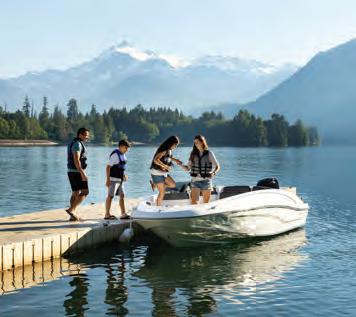
Embarking on the open water is an exhilarating experience, flled with the promise of adventure and relaxation. Whether you’re a seasoned sailor or a weekend cruiser, protecting your vessel with proper insurance is not just a choice—it’s a necessity. Explore the reasons why every boat owner should prioritize boat insurance for a worry-free voyage.


The open water can be unpredictable, with unexpected storms, collisions, or other potential accidents. Boat insurance can give you fnancial protection if there is damage to your vessel, providing coverage for repairs or replacement.
Accidents on the water can result in damage to other boats, docks, or even injuries to passengers. Boat insurance offers liability coverage, which can pay for damages or injuries you’re liable for while boating, up to specifed limits, and lawsuit costs if you’re sued. This includes damage you cause to another watercraft or if someone on or near your boat is injured and you’re found to be legally responsible.
Unfortunately, boat theft and vandalism are realities that boat owners face. Boat insurance has comprehensive and collision coverage that can protect you against events outside of your control, including theft and vandalism.
Accidents on the water may lead to injuries for you or your passengers. Boat insurance offers a range of optional medical payments coverage limits, helping to cover medical expenses if you are in an accident or someone is hurt on your boat, regardless of fault.
If you fnanced the purchase of your boat, most lenders require insurance coverage to protect their investment. Having boat insurance not only fulflls these requirements but also gives you peace of mind knowing that your fnancial interests are safeguarded.
Some water municipalities and marinas may require proof of insurance for docking or accessing certain areas. Boat insurance allows you the fexibility to explore different destinations without worrying about entry restrictions.
Emergency towing and assistance
Progressive boat insurance can include optional Sign & Glide® On-Water Towing coverage. If your boat is disabled or breaks down on the water, Sign & Glide® pays for on-water towing, jump starts, soft un-groundings, and fuel delivery.
Wreckage removal
If your boat sinks, Progressive boat insurance will cover the cost of removing your boat from the water (if removal is legally required).
Investing in boat insurance is not just about protecting a valuable asset; it’s about safeguarding the memories, experiences, and joy that come with your on-water adventures. Don’t let unforeseen circumstances disrupt your journey—navigate with confdence, knowing that Progressive boat insurance has you covered. Ensure a smooth and worry-free voyage, because when it comes to your boat, peace of mind is the ultimate luxury.
Scan to get a quote in as little as 4 minutes
learn more.


























The quest to find the ultimate men’s watch has traditionally been a difficult one in the world of fashion. A timepiece with the perfect look and functionality has long been the goal of both watch designers and enthusiasts alike.
The Renegade Blue Chronograph Men’s Watch is the perfect combination of style and function. With a sleek design that features a bold blue dial, rose gold hands and hour markers, and a durable sports silicone band, this timepiece will instantly elevate any outfit.
The three sub-dials provide a precise timekeeping function. The sports silicone band is durable yet comfortable, providing a secure fit that won’t slide around on your wrist. The band is also easy to clean and maintain, making it perfect for everyday wear. The watch’s 30 Metre Water Resistance rating ensures that it has you covered whatever the occasion.
The Renegade Blue is also built to last, with a sturdy stainless steel caseback and exquisitely detailed bezel. The watch is powered by a super reliable quartz movement, which is covered by our incredible 5 Year Movement Warranty - ensuring accurate timekeeping for many years to come!
At the amazingly low price of just $99 plus S&H, this watch is an absolute steal. Don’t miss out on the chance to own the Renegade Blue and Rose Gold Chronograph Men’s Watch - order yours today!


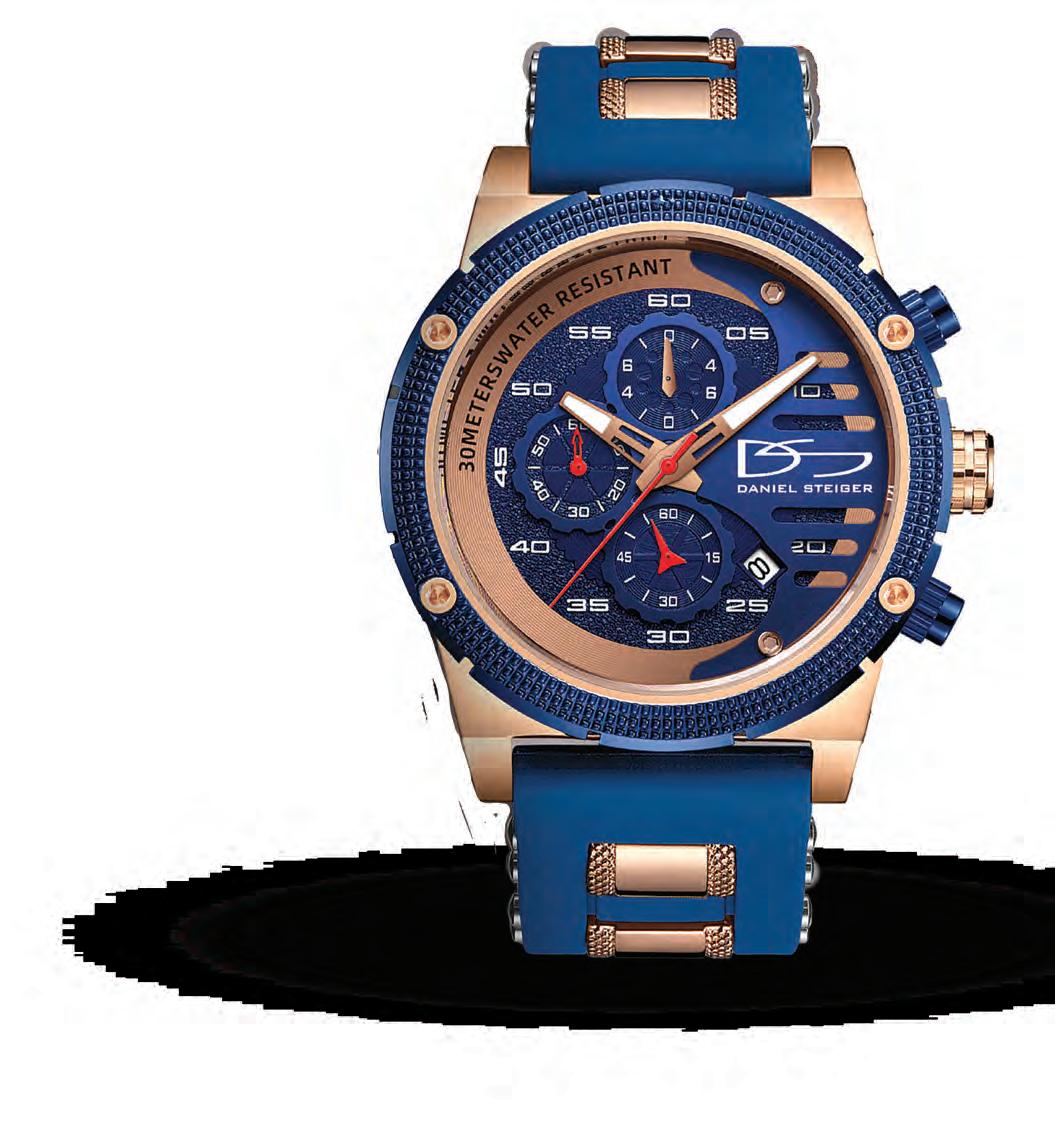


By Dr. Benjamin Cole
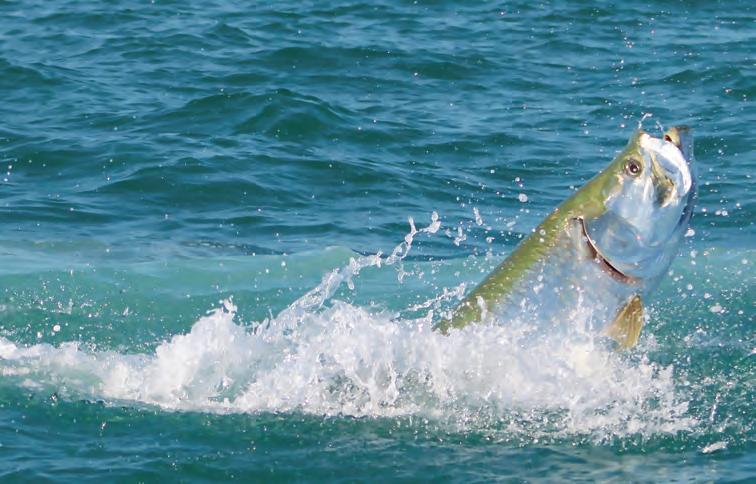
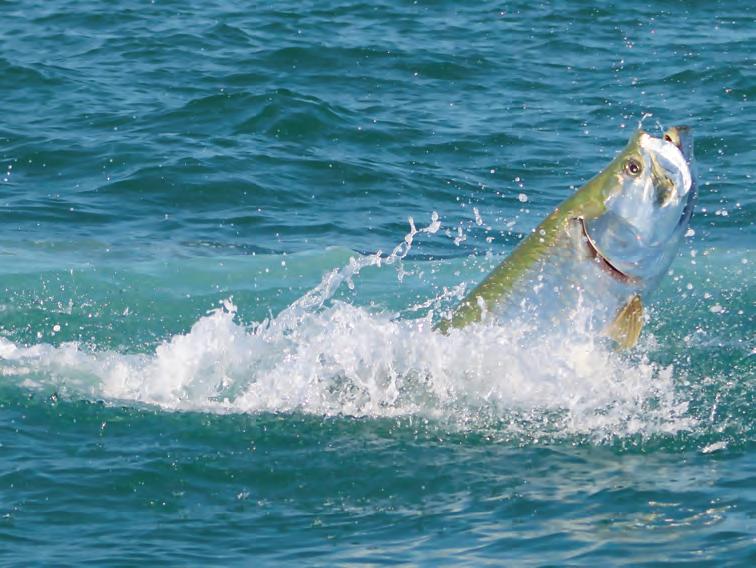
Tarpon (Megalops atlanticus), known as “silver kings,” are renowned for their acrobatic leaps and strength, making them a top target for anglers. However, their fascinating migration patterns also play a crucial role in maintaining marine ecosystems.
Tarpon migration is largely driven by the need for feeding and reproduction. Tese highly
migratory fsh can travel thousands of miles, infuenced by water temperature, food availability, and spawning needs. Preferring temperatures above 72°F (22°C), tarpon move south during colder months, seeking warmer waters.
the U.S. Atlantic coast, they travel from Virginia to Florida and the Caribbean, while in the Gulf, they move from Texas and Louisiana to Mexico. Teir northward migration begins in late spring, driven by rising temperatures and abundant food. By summer, tarpon reach as far as Virginia, signaling the start of fshing season. As fall sets in, they return south to warmer wintering grounds.
A key driver of tarpon migration is spawning, typically occurring between May and September in ofshore areas with strong currents. Afer spawning, larvae are carried into estuarine environments like mangroves and marshes, crucial nurseries for juvenile tarpon. Tese habitats are essential for the species’ survival, but environmental degradation threatens their health.
While tarpon are primarily a catch-andrelease species, improper handling during fshing can lead to mortality. Conservation eforts, including safe fshing practices and habitat protection, are essential for sustaining tarpon populations. Organizations like the Bonefsh & Tarpon Trust work to monitor migration, protect critical habitats, and promote responsible fshing.
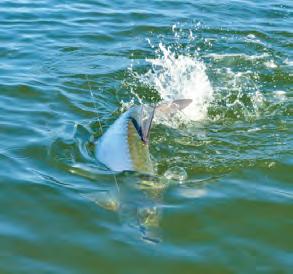
Found in the Atlantic Ocean and Gulf of Mexico, tarpon migration varies by region. Along
Tarpon migration is a remarkable journey, driven by the search for favorable conditions. By protecting these iconic fsh and their habitats, we can ensure their survival and preserve their role in marine ecosystems for future generations.

Capt. Russ Walker

If a fsh can see the bait, they’ll hit it much faster than if they must search through grass or mud. Tat’s why I rig to suspend the bait, keeping it above the bottom where fsh can easily spot it. Grass fats are incredibly productive fshing grounds, and targeting the edges where the fat drops of into deeper water is the key to catching bigger fsh.
In around fve to six feet of water, grass growth stops, forming a natural erosional edge where fsh like trout, cobia, tarpon, and mackerel hunt. Tese edges act like a “superhighway” for predatory fsh. While smaller fsh are found on the fat, the big ones hang near the edge, diving into the deeper channel when necessary.
Te best tool for this fshing method is a fat-topped popping cork. Te cork keeps the bait suspended at the desired depth and makes a popping sound when tugged, drawing fsh to the noise. Tis is especially useful for beginners, as it’s an easy technique that produces great results. With just a few pops, the live shrimp below the cork will jump into plain sight, attracting the fsh.
As a charter captain, I’ve found this method efective for anglers of all experience levels. It’s not uncommon to catch 80 to 100 fsh during a four-hour trip using this rig. It works equally well ofshore near wrecks, suspending bait for species like permit.
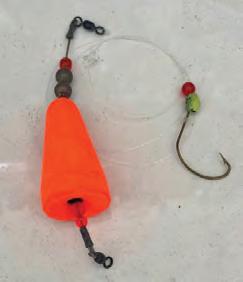
I make my own 200 lb. rated, fat-topped popping bobbers, stronger and shorter than store-bought versions. Tey’re perfect for fshing
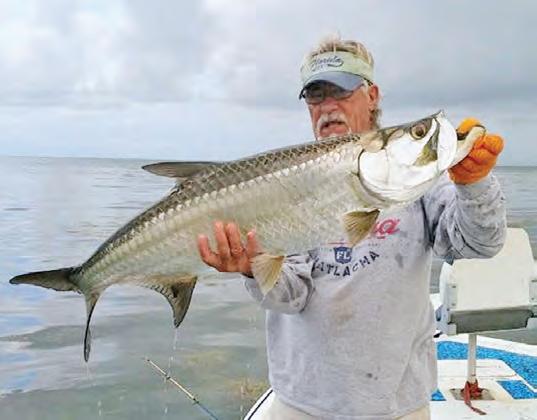
everything from trout to tarpon, with only the hook size and leader changing. Te leader length is always four and one half feet, and the magic depth on the grass-fat edge is fve feet.
Typically, I use a 3/0 Mustad Wide Gap Hook with a 1/4 oz. egg sinker and a 30 lb. fuorocarbon leader. Tis rig works wonders for trout, pompano, mackerel, snook, redfsh, and ladyfsh.
So, give it a try! Pop the cork a few times, remove the slack, and hang on. When the bobber disappears, just “yank it and crank it.” You’ll see your catch increase by at least 40 percent. Fish On!
Capt. Russ Walker is a USCG Masters licensed fshing guide and owner of Tide Walker Charters out of Cape Coral, FL. www.tidewalkercharters.com
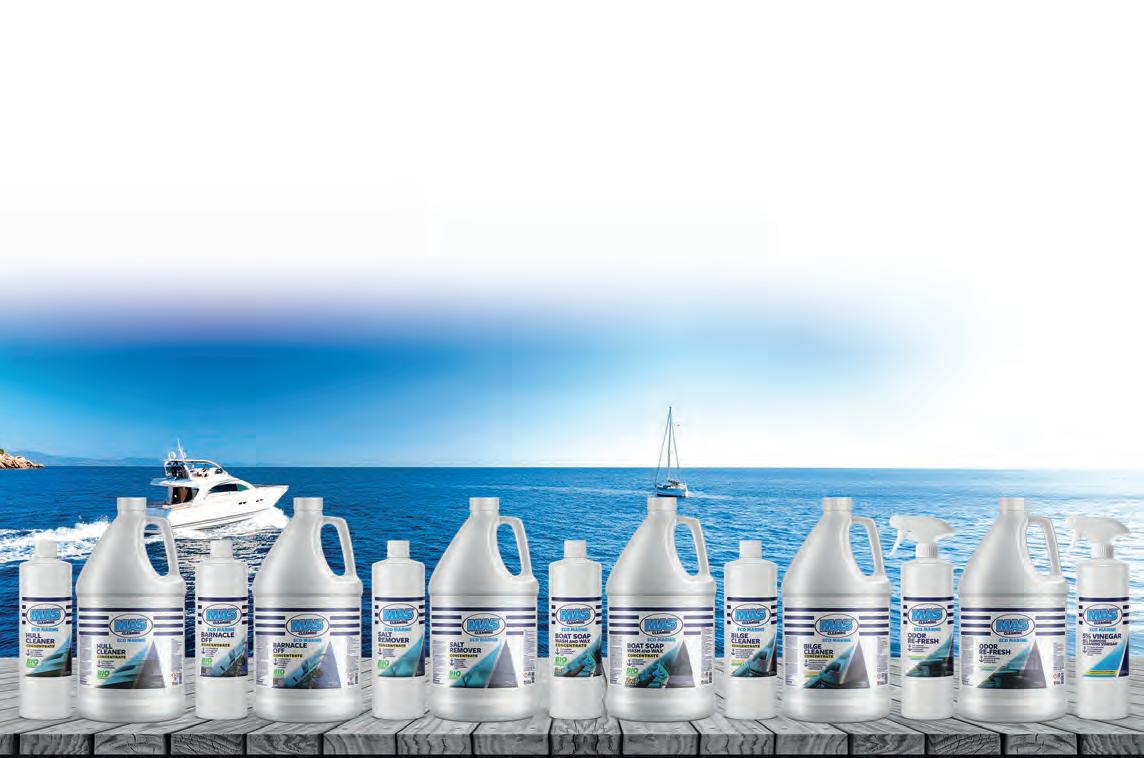

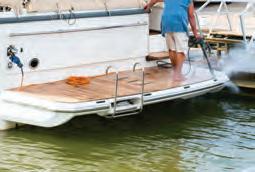
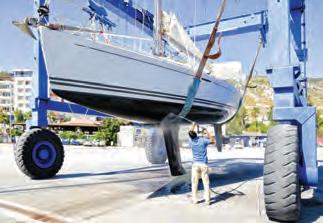










By A. deGruchy
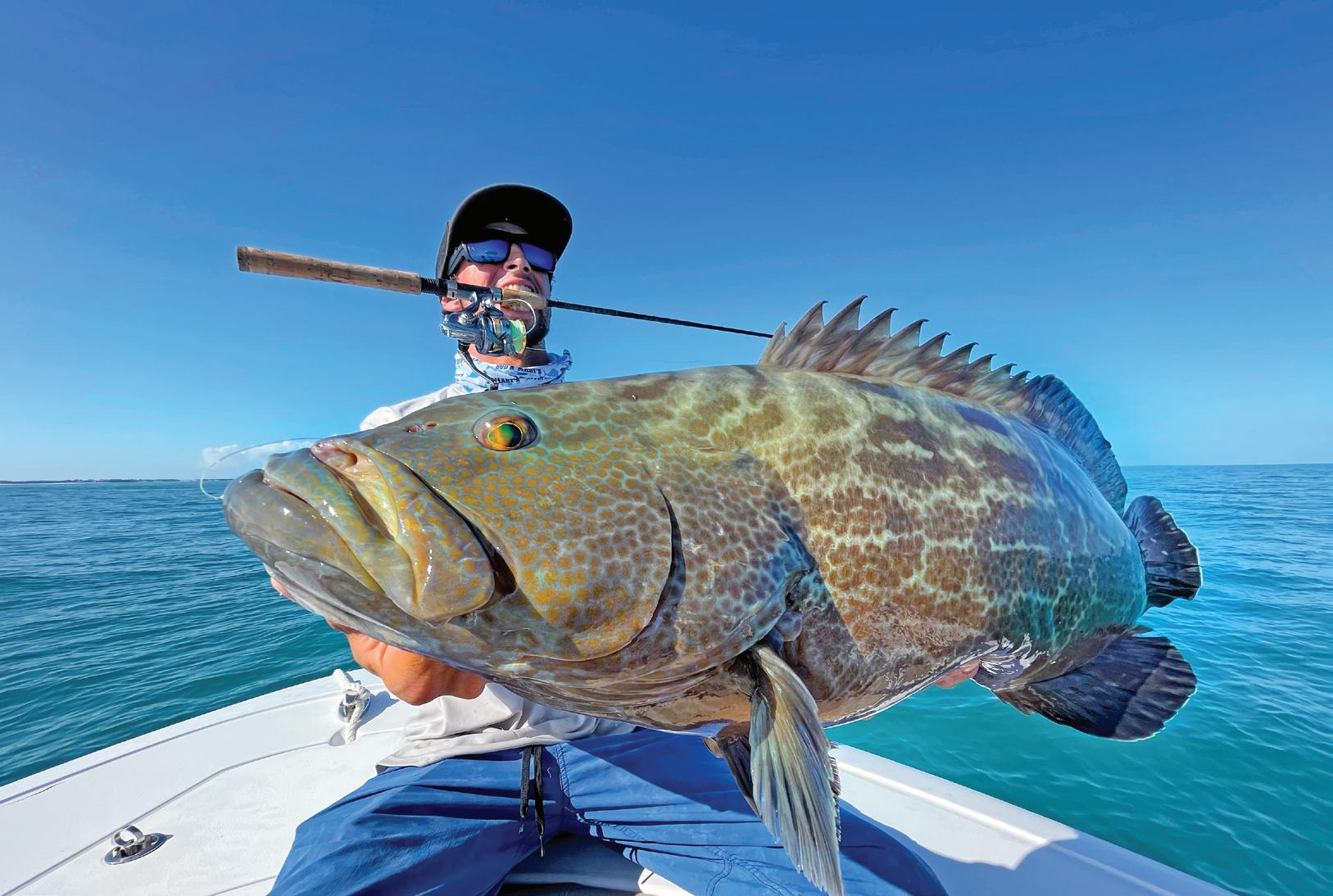

The Florida Keys transform into a fishing paradise as the intense summer hurricane weather fades and cooler fronts begin to roll in. This fall, it’s all about the patch reefs... vibrant underwater gardens teeming with a variety of species. Targeting these patches is incredibly fun and rewarding. You’ll encounter species like snapper and grouper, along with various types of mackerels. Light-action fishing is always a blast,
and in the Keys, there are countless patch reefs to explore.
To find a patch reef, look for shallow spots scattered with coral and sand, typically just a few miles offshore at depths of typically between 1530 feet. For gear, we recommend using a PENN Spinfisher VII 3500-4500 combo. The Mustad 3/0 Demon circle hooks are reliable, and when it comes to bait, live shrimp are unbeatable. It’s all about enjoying the vibes and seeing what you can reel in... mutton snapper, red groupers, porgies, Spanish mackerels, and much more!


This fall will be even more special with the opening of Three Waters Resort in Islamorada. This elegant new destination offers not just stunning accommodations but also brand-new restaurants and a magnificent ambiance. Imagine savoring fresh culinary experiences while soaking up breathtaking waterfront views. After a day on the water, kick back and enjoy a drink at one of the resort’s dining venues or onsite restaurants.
So come on down this fall and get ready for some fun fishing in the Florida Keys. With Three Waters Resort as your home base and Bean Sportfishing Charters as your vessel, you’ll be hooked on the fishing, the food, and the laid-back vibes!
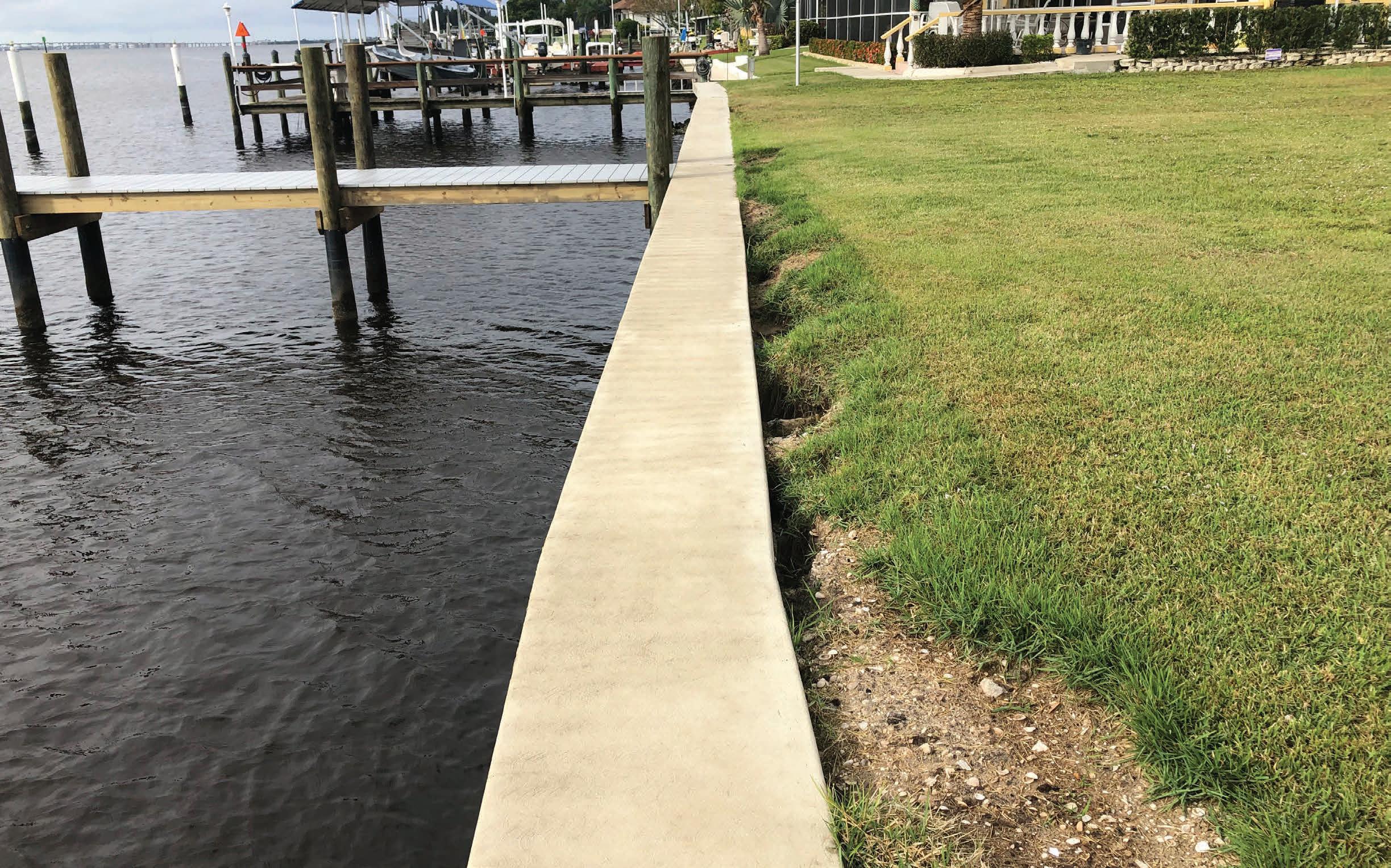






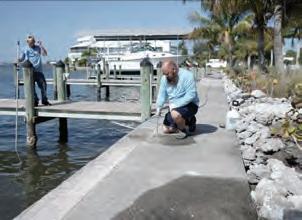
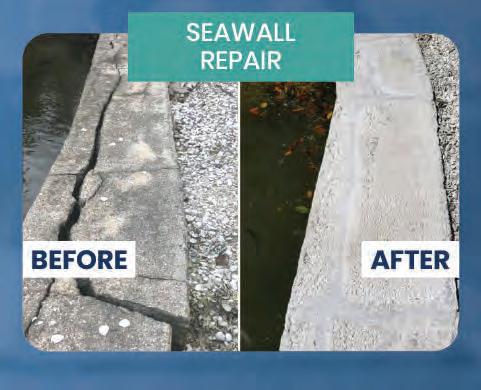












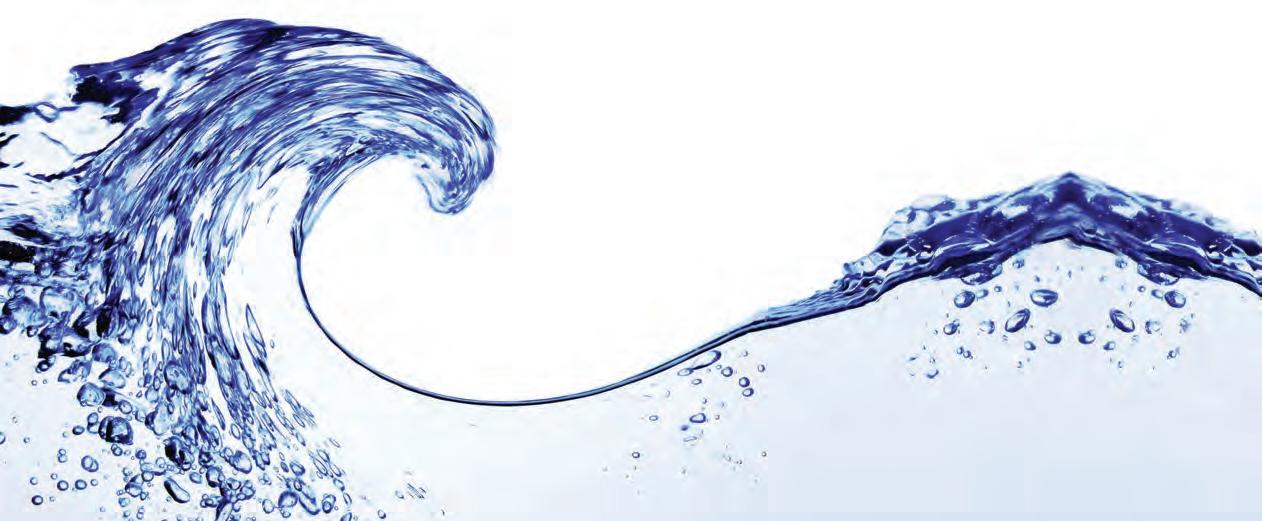
By Capt. Jack Gohmert
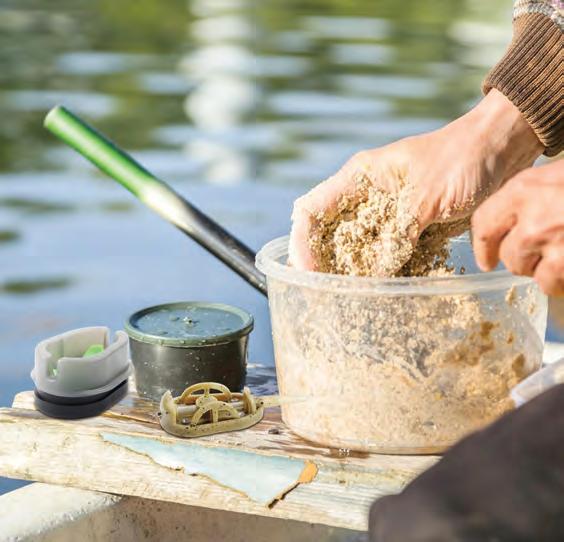
Creating your own chum bait can signifcantly boost your fshing success. Chum, a mixture of fsh parts and attractants, draws fsh to your spot by creating a feeding frenzy. Making your own chum lets you tailor it to the fsh you’re targeting and saves money. Here’s a simple guide to making efective chum and using it for the best results.
Chum is a blend of fsh-based materials that attract predatory fsh. When
placed in water, it forms a scent trail and visual signal that lures fsh like snapper, tuna, and sharks. Whether you fsh ofshore, from a pier, or inshore, chum helps by concentrating fsh around your location.
Making chum is straightforward. You’ll need the following:
Tools:
• Food processor or meat grinder
• Bucket or container
• Rubber gloves
• Freezer bags (for bulk storage)
Ingredients:
• Fish scraps (bait lefovers, carcasses)
• Canned fsh (sardines, mackerel, or tuna)
• Fish oil or menhaden oil
• Breadcrumbs or oats (to bulk up the mix)
• Optional: sand or cornmeal (to sink chum faster)
1. Gather Fish Scraps: Collect lefover fsh scraps or use canned fsh. Local fsh markets are great for sourcing discards.
2. Grind the Ingredients: Use a food processor to grind fsh scraps into a paste. For canned fsh, mash it along with the oil for a strong scent trail.
3. Add Bulk: Mix in breadcrumbs, oats, or cornmeal to bulk up the chum. Tese ingredients absorb oils and create a scent cloud. Sand can help sink the chum.
4. Enhance the Scent: Stir in fsh oil to intensify the scent, making it travel farther underwater.
5. Pack and Freeze: Freeze large batches in bags. When fshing, break of chunks and toss them into the water.
For ofshore fshing, throw small amounts of chum every few minutes to create a steady attractant. For shore or pier fshing, use a chum bag or cage to suspend and slowly release the chum. Adjust the size and consistency of your chum based on the fsh species. Larger fsh prefer coarse chum with chunks, while smaller fsh may respond better to a fne mix that creates a cloud.
Making your own chum is a cost-efective way to improve your fshing. With minimal tools and ingredients, you can craf a bait that attracts fsh and turns a slow day into a successful one.

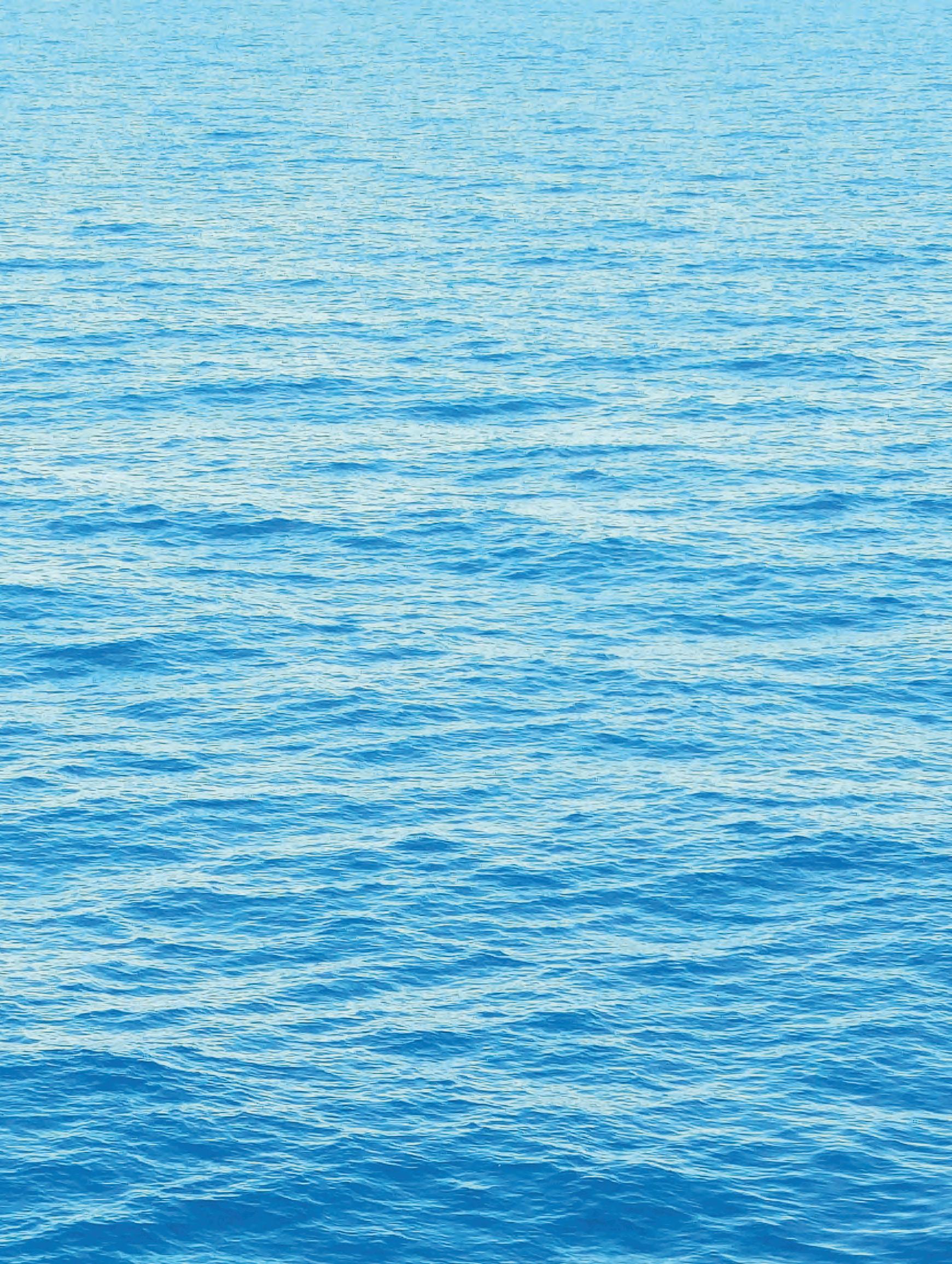
Just as expected for October, the redfish bite turned on big time. This month, redfish will continue to roam most grass flats throughout Tampa Bay. Here are a few keys to success when targeting redfish.
First: If fishing a mangrove shoreline, fish tight to the mangroves. Redfish like to feed just inside the mangroves around the low hanging branches and roots. It helps to chum with live bait to draw them out of the bushes.
Second: Always be on the lookout for mullet, when pursuing redfish. Redfish usually travel within mullet schools so, when I see mullet heading my way, I take notice. If necessary, I’ll position my boat so they pass down wind within casting distance, and I’ll start live bait chumming heavily. If there are redfish mixed in with the mullet, you’ll know by the explosions on the bait that you just tossed out. The longer you chum, the more you draw to the boat.
Third: Learn to distinguish a mullet school from a redfish school--there is a subtle difference. Mullet tend to push water more aggressively than redfish and break the surface often as they move along. Of course, the tell tail sign is when they jump out of the water. However, when redfish schools move across the grass flats, especially during a high tide, their wake can be hardy noticeable. Many times, you’ll just notice a slight difference in the ripples on the water’s surface.
Remember, there’s a one fish per person, per day bag limit on redfish, and they have to measure between 18-27 inches to the tip on the tail to harvest. Any fish under or over those measurements must be released. There’s also a strict two fish per vessel limit per day, regardless of the number of passengers on board.

BY: WADE OSBORNE

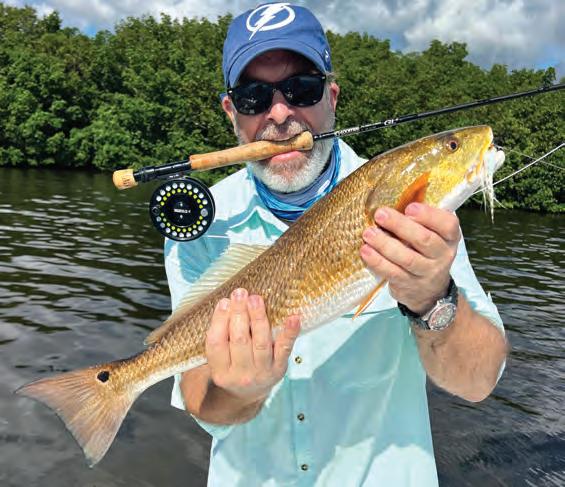
Now that water temperatures are on a downward trend, the snook have become more active too. With the snook spawn being over, the large females are now on the move and thinking less about love and more about food. Ten or more snook can be caught within an hour, if you hit the right spot, during good tidal flow. Just like with redfish, chum with live bait to get the action
Continued on page 6
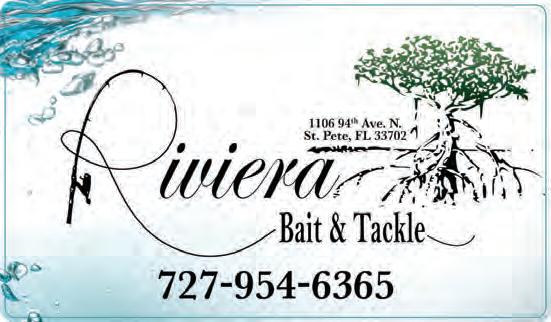
LIVE BAIT
Shrimp
Pinfish
Fiddler Crabs (seasonal)
Pilchards (seasonal)
Frozen Bait
ROD REPAIRS
CUSTOM ROD BUILDS
REELS, LINE & TACKLE
1106 94th Ave. N. St. Pete

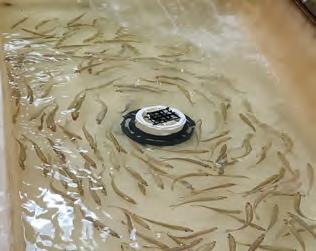


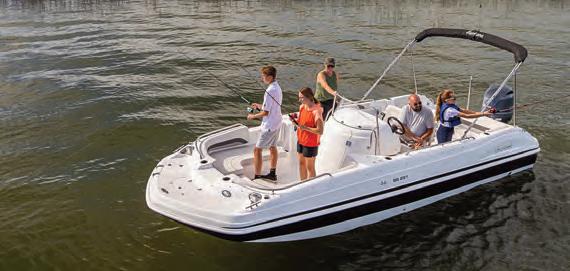

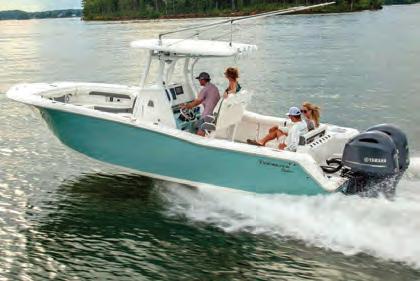

By: Bruce Butler
Last month, after the storm, I went out to deliver the magazines and the devastation was massive--people's whole lives were out in the street! But, there are signs of hope and deliverance. A little old lady carrying a handmade sign about free food and water; doing what she could to help out during the tragedy. Church’s parking are lots set up offering laundry services, showers, food and essentials--people pulling together!
My first stop was at Norfleet's fish camp in Aripika. Of course, the place has been damaged for the third time that I remember. I've always had a special bond with Aripeka. As I got out of the car, I was greeted with a “you guys don't give up.” Then, with almost a tear in her eye, she said “thank God for something normal. I don't know where the rack is, but I'll put them right here and she thanked me for coming. I was truly humbled. Such a small thing, but a step back to normal.

As I completed the route, the devastation continued with Trader Bay and the marina gutted. There was more food, showers, etc., along the way. With some hope for the future and rebirth of our communities, the prayers of myself and all the Coastal Angler Magazine family go out to those who have lost so much. The storm struck our family, as well, with my daughter losing everything in St Pete. with a new baby on the way we too shall survive!
I've been away for a while, so hello to my readers. This was a story I had to share, God bless!





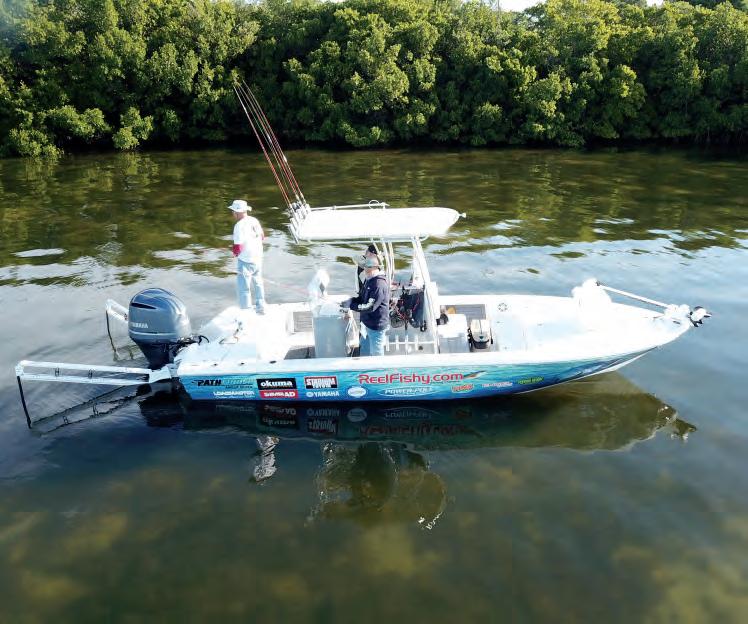

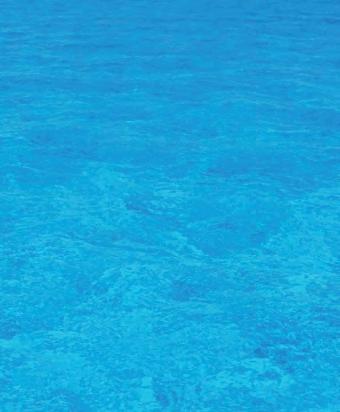
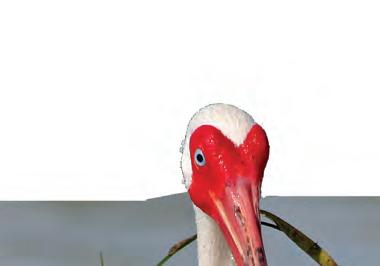
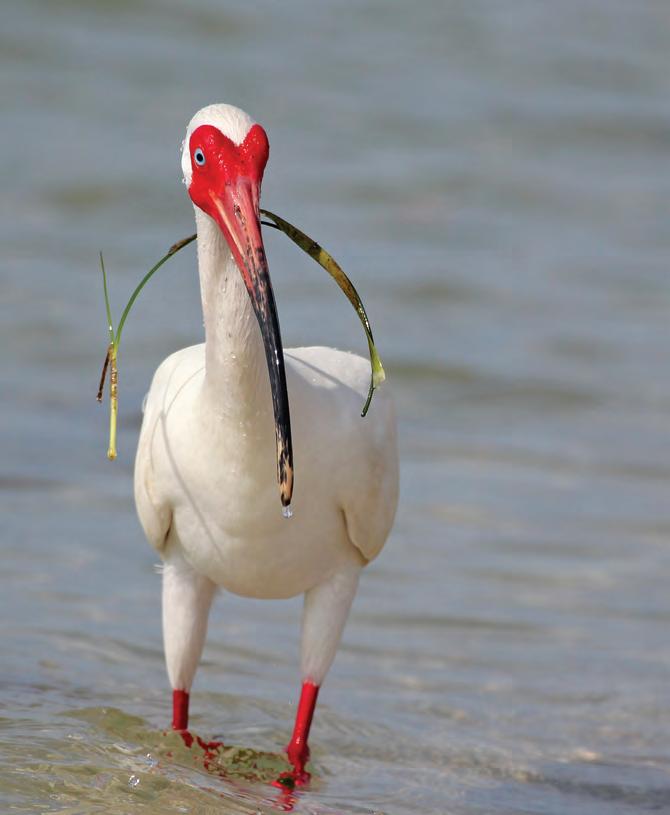
By: Capt. Wes Tallyn
The White Ibis is often called the “hurricane bird.” It’s considered the last bird to leave on a hurricane’s approach and the first species to return to storm battered areas. This is why the mascot of the University of Miami is the White Ibis. White Ibises stand between 23” and 27” tall. Their long, downward turned, orange bill is their easily identifiable feature. They use that orange bill to probe into the ground to find their prey. You can usually find them in wetland areas near both fresh and salt bodies of water. Ibises eat everything from insects to reptiles and crustaceans. Small snakes and frogs seem to be a favorite meal, and other Ibises often try to steal the prize when one bird finds one. Juvenile White Ibises are brownish gray with pinkish bills and will slowly gain their white feathers over time. Look for them in small flocks of about 5 to 25 birds flying overhead, or probing the soil in your local parks, or maybe even, in your yard!


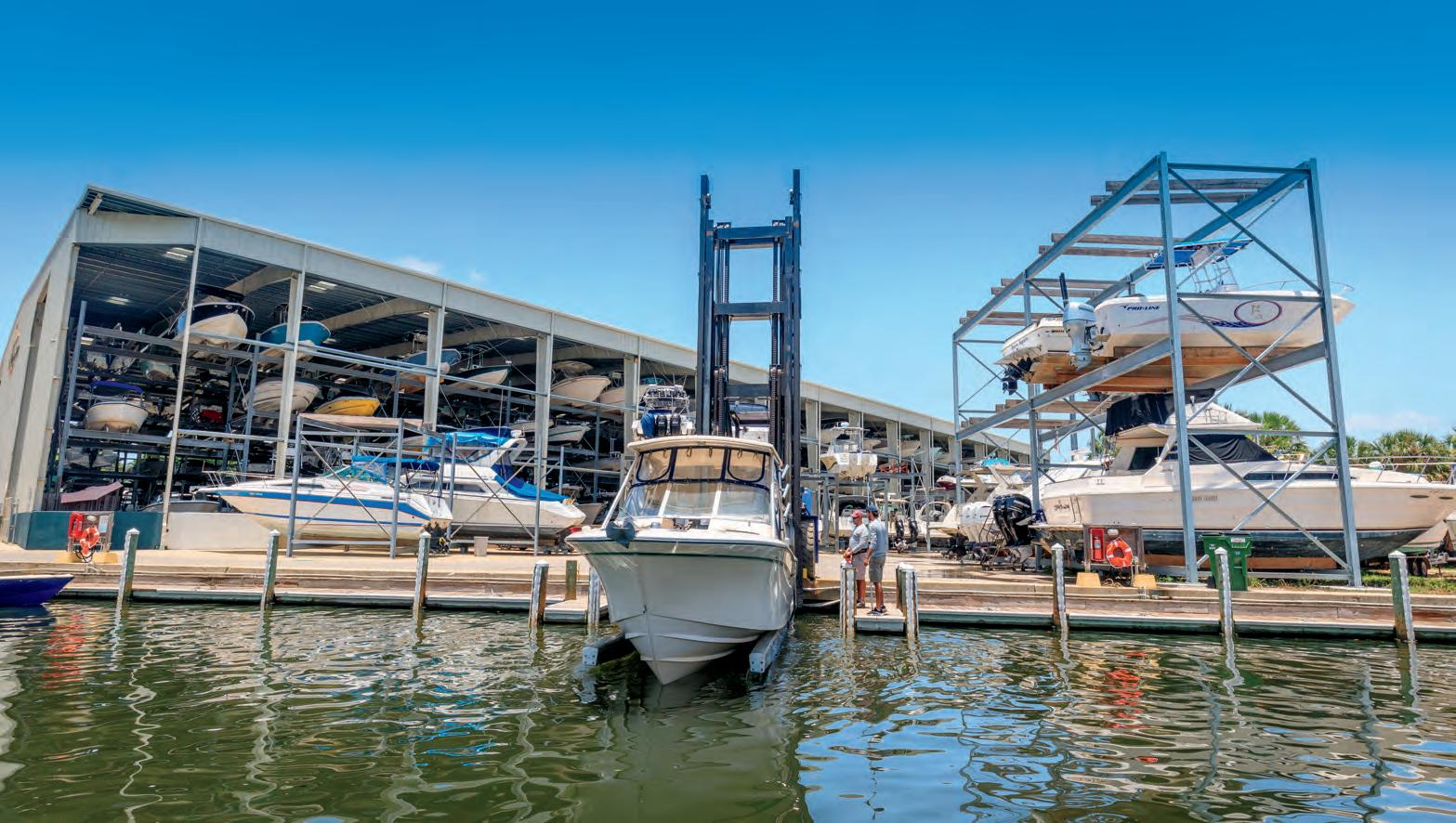
— Captain Wes Tallyn was raised in Florida and is a fisherman, birder, avid outdoorsman, photographer, and environmental scientist. Wes has a focus on conservation and education in the community and is the owner of Snook Jam Outdoors. You can find him on Instagram @snookjam or call 727-410-5853.
up to 45'

Agood angler is like a magician who can pull tricks out of the bag to help him catch more fish. It could be just a simple item to save time, or a technique that gets the fish to bite. We all have some tricks to help us catch more fish and I am going to share some of them with you.
These five basic tricks can help you catch more fish, and save time and money.

1. Cut noodles used for kids in the swimming pool into different lengths. They make excellent leader holders, especially during the mackerel and king fish season allowing you to have 12 pre-rigged leaders ready to go. Use one color for mackerel and another color for kingfish. You make the leaders at home while watching TV instead of watching commercials.
2. During the Fall, when the trout bite goes crazy, my favorite way of catching them is using a Four Horsemen float, only because it
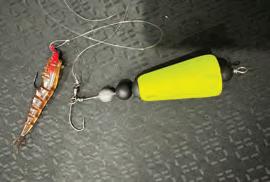
has two sound producing beads and a weight that increases my cast during windy days. Also, the beads create the sound of a wounded bait. The clarity of the water dictates the size of my leader--anywhere from 15 to 30-pound fluorocarbon. I work the float with a popping action to draw attention to my bait and the float. Over the years, I’ve noticed that my float had chunks missing from the trout attacking the float like a top water bait, so I put a small split ring where the swivel meets the float wire and add a 2/0 hook. I started catching two trout at a time. This method can be used with live bait or, as the picture shows, artificial bait.
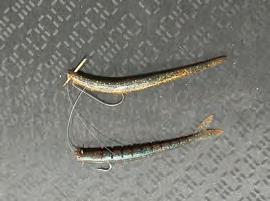
3. One basic problem over the years was keeping the soft baits on the hook
after a few hits. With that said, here is a simple problem solver. After the head of the bait starts to break, just cut it back a little and stick the tip of a toothpick through the bait and the eye of the hook. This keeps your artificial baits from sliding off.
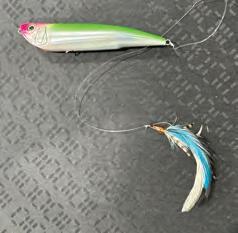
4. When fishing Winter tides in shallow grassy areas, you need to work just above the grass line. So, take one of your top water plugs, remove the rear hook and put on a short leader. The length depends on the depth of water. I have mine

BY: CAPT. SERGIO ATANES

set at about eight inches, and I tie on a mid-running fly. The action of the plug draws attention, and the tailing fly becomes the easy prey for the fish to hit. In some cases, I have caught two fish at the same time.
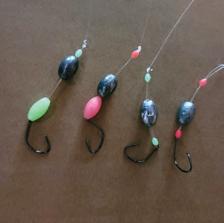
5. Fall and Winter fishing for sheepshead, mangrove snapper and flounder in deep water can be fun and very productive. I found a trick to get them to bite when all else fails. I fish this method all Winter long. A simple soft glow bead is placed between the eye of the hook and the lead. For some reason, the glow of the bead seems to draw attention to the bait, and my sheepshead, snapper and flounder bite has tripled over the last few years. The one question I ask myself “is it the bead that gets them to bite, or has my luck increased?” Either way, it works for me.
The forecast depends on the weather. If the water temperatures drop below 68 degrees, start looking for the bigger sheepshead coming in from the Gulf. They will work their way to the ledges and bridges. Big trout can be found on the edges of channels or deep holes. This is a great time to use artificial baits like Saltwater Assassin P & V with a ¼ oz jig head. Redfish should be at their peak around creek mouths and oyster bars.
— Capt. Sergio Atanes is host of Florida West Coast Fishing Report on Facebook and YouTube. He also hosts Fishing Adventures Florida TV show airing on YouTube, Waypoint TV, Carbon TV, Outdoor Action, and Angling TV. Owner of Reelfishy.com Charter business covering the west coast of Florida with over 135 captains on staff. For information contact Capt. Sergio at (813) 973-7132 email: atanes@msn.com.
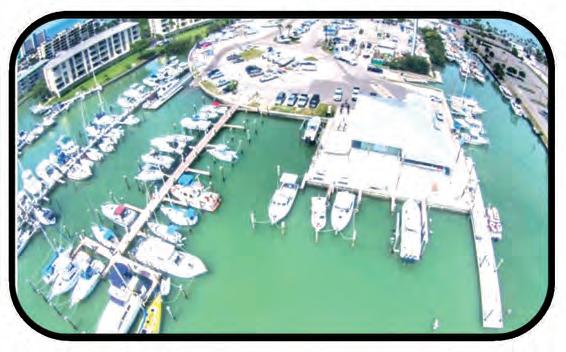
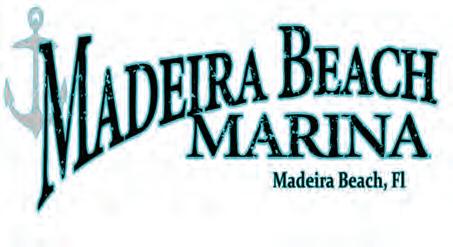





going. Some of the snook hot spots are mangrove points adjacent to deep water areas with mangroves adjacent to oyster beds and mangroves along creek or river mouths.
You only have until the end of this month to harvest snook, so make the most of it. Snook have a slot limit of not less than 28 inches or more than 33 inches. The bag limit is one fish per person, per day.

The seatrout bite has been strong all year long and continues to be robust. Grass flats in water between four to six feet deep has been the most productive for large keeper sized seatrout, but they’re active just about everywhere. Lately, it seems an outgoing tide is the most productive, as far as, sheer numbers and larger sized fish. I like to suspend a bait under a float when fishing for seatrout to keep the bait out of the grass. Then, I’ll cast the bait 90 degrees off the side of the boat from the drift and let the tide carry the bait across the grass flat while keeping the bail open. Once a seatrout takes the float under, I close the bail with my hand, and reel until the line is tight and lift the rod for a hook set.
Seatrout have a bag limit of three fish per person and a slot limit of 15-19 inches. Here’s where it gets a little tricky: You can keep one per person over 19 inches if fishing from shore, but only one per vessel, regardless of the number of people if fishing from a boat.


As the month progresses and we move closer to December, more and more cold fronts pass through our area. Early on, the water temperature begins to drop with each passing front until it stabilizes. During this time, bait fish start leaving the grass flats for deeper water. Once the bait leaves, so do the fish.

When fish leave the shallows in search for bait, they’re more receptive to eating shrimp. The reason: Baitfish tend to move into deeper water in areas where snook, redfish and seatrout don’t generally live. Then fish tend not be as selective in what they eat. Until then, carry on! Afishionado, Adventures in Fishing.
—Tampa Bay fishing guide Wade Osborne of “Afishionado Guide Services” has been plying the waters of Tampa Bay as a professional full-time captain, since 1997. Osborne offers inshore fishing charters on light tackle spin, fly or plug. He also offers eco-tours with an emphasis on photography. For more info., visit Afishionado.com or find Afishionado Guide Services on Facebook and Instagram. Email: wade@afishionado.com Call/Text 813-286-3474


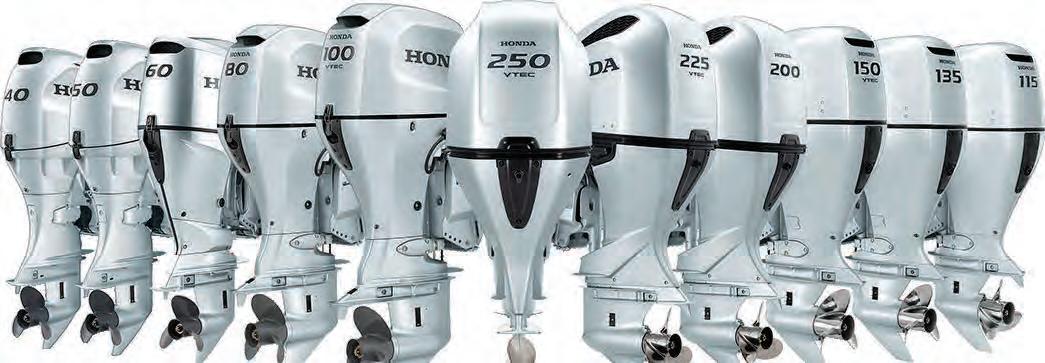

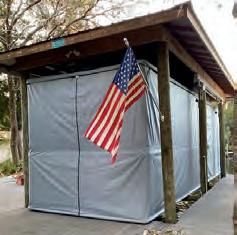
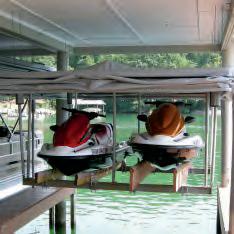


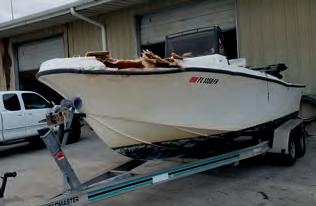


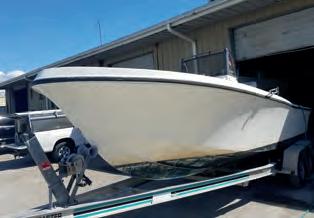
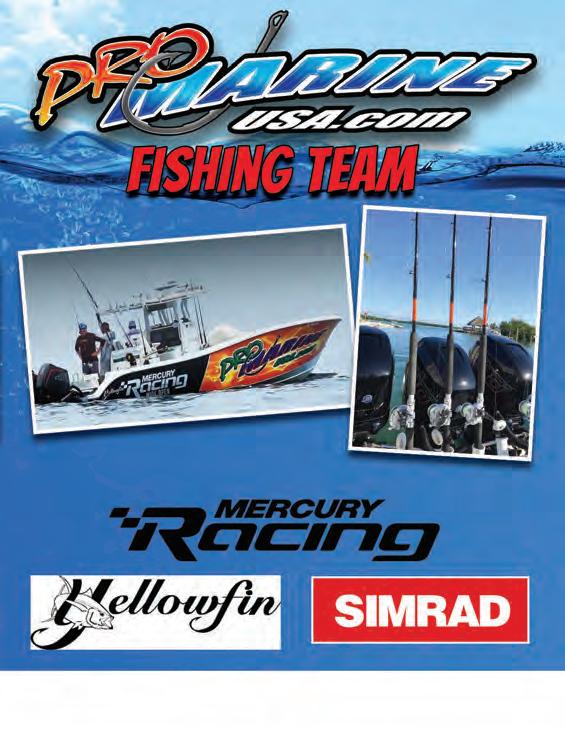




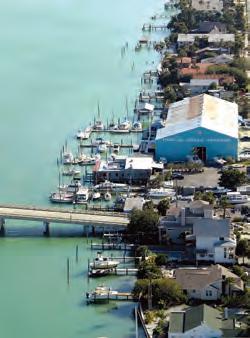
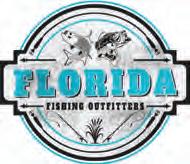

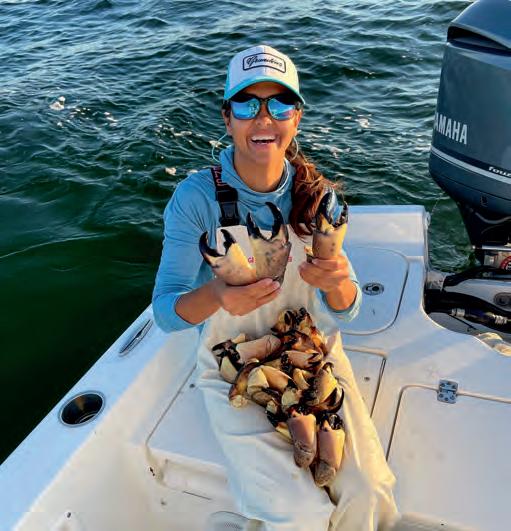
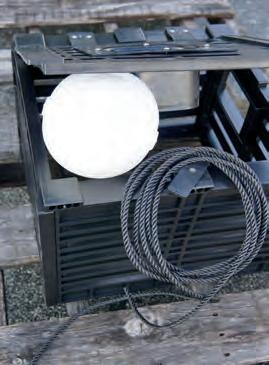



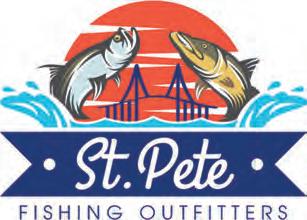


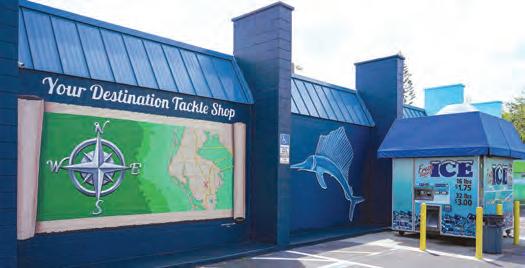
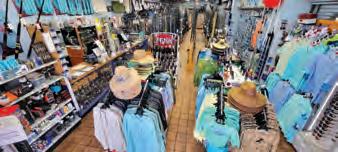

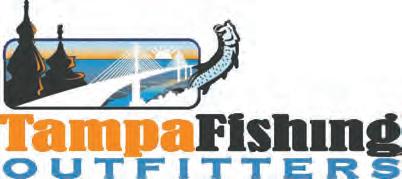



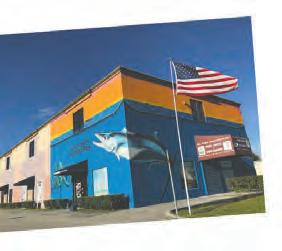
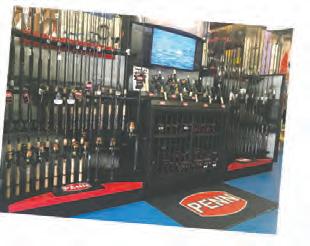

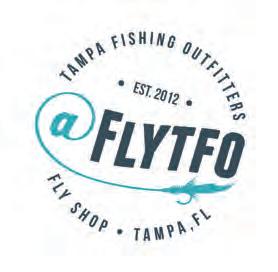

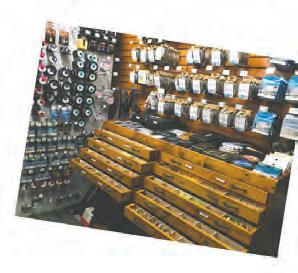


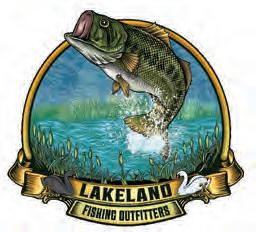


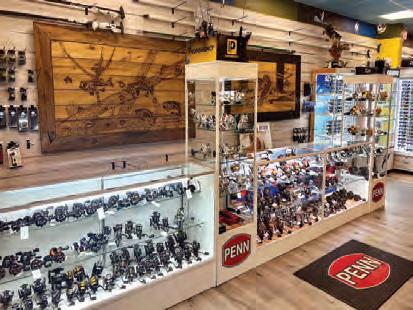



When November rolls around, fishing in Tampa Bay transforms into an exciting adventure. The weather cools down, and so do the waters, making it the perfect time to cast your line. Whether you're a seasoned angler or just starting out, you'll find plenty of opportunities to reel in some fantastic fish this month.
In November, Tampa Bay is alive with various fish species. Redfish are school up, making them a popular target for many fishermen. These beauties are just fun to catch, since they never give up. Speckled trout are another highlight this month. They thrive in the cooler waters and can be found near grass flats and shell beds along with the redfish. Don't forget about snook, as they can still be caught regularly during November, especially around areas that have good water movement like jetties and bridges.
BY: CAPT. GEORGE HASTICK
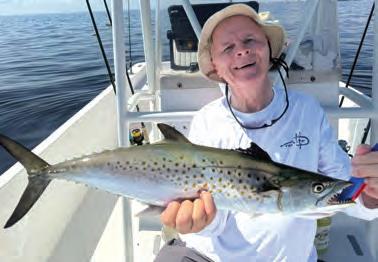
Tampa Bay has countless fishing spots, but some are more fruitful in November. The shallow waters near the mangroves can be gold mines for catching redfish and snook. The flats around Weedon Island and the areas near the Sunshine Skyway Bridge also yield good catches. Keep an eye open in your wake when you are running the edges of the flats, because you might see some pompano jumping out of the water. If you do, go back to that area and fan cast some pompano jigs, and you might get rewarded with some tasty fish. Also, keep an eye out for cobia cruising under manatees along the bridge pilings, range markers and channel markers. They will readily take a live bait like pinfish or threadfin under a cork, along with many artificial baits like Saltwater Assassin Artemis soft plastic swim bait. If you're up for a little adventure, consider head-
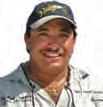
ing out to the deeper waters where you might hook a grouper or snapper around the channel edges and the bridges. Remember, gag grouper are catch and release only, but they are a fun fight!
November brings a change in the weather, and that can play a big role in your fishing success. The temperatures start to cool down, usually ranging from the mid-60s in the morning to mid-to-high 70s during the day. This scenario leads fish to become more active, as they prepare for the Winter months.
Using the right fishing techniques can make a noticeable difference. For redfish, try sight fishing with lures in shallow waters. Cast past the fish and reel in slowly to avoid spooking them, but never reel at them. When targeting speckled trout, a twitch retrieve can work wonders, or a shrimp under a popping cork. Give your lure or popping cork a few quick jerks and then pause--this imitates a wounded bait, and the splashing of the cork will attract their attention.
Fishing in Tampa Bay during November offers an unforgettable experience, from the thrill of the catch to the stunning views of the Bay. With a little preparation and the right mindset, you can enjoy some of the best fishing of the year!
— Capt. George Hastick of “Fish Hunter Fishing Charters” in St. Petersburg, Fl. is the co-host of Florida West Coast Fishing Report and co-hosts Fishing Adventures Florida which is on five streaming channels and You Tube. He has been fishing the waters of the Tampa Bay area for over 40 years and guiding over 20 years.
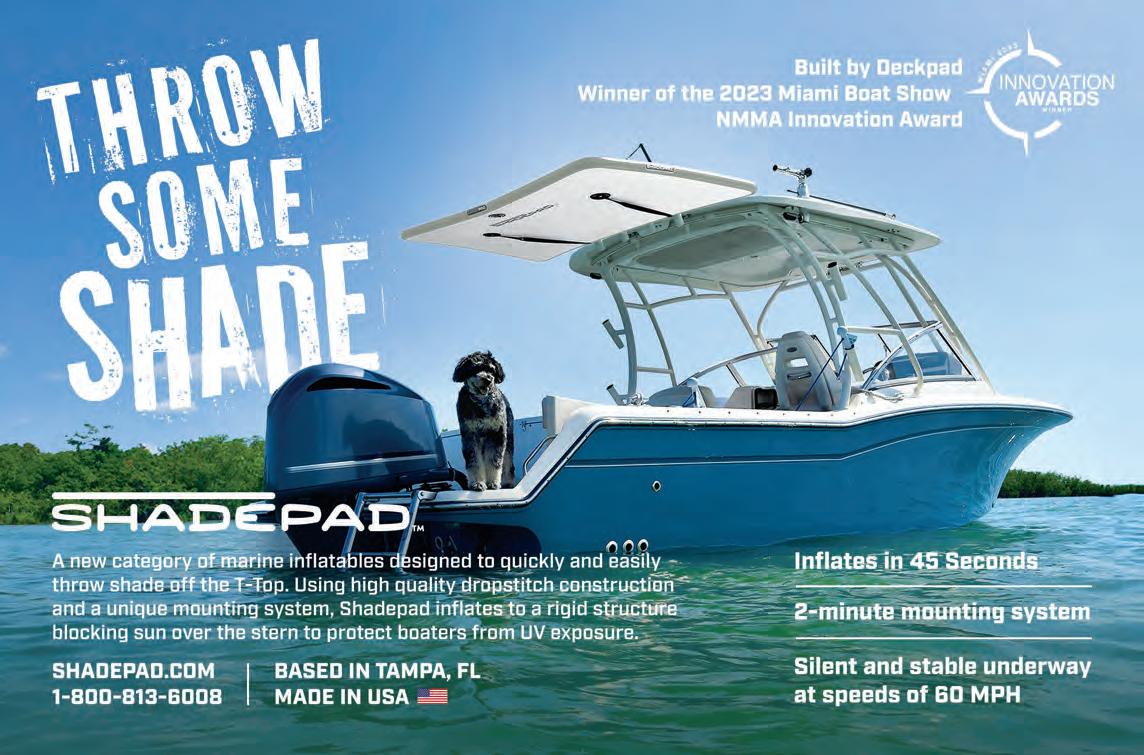


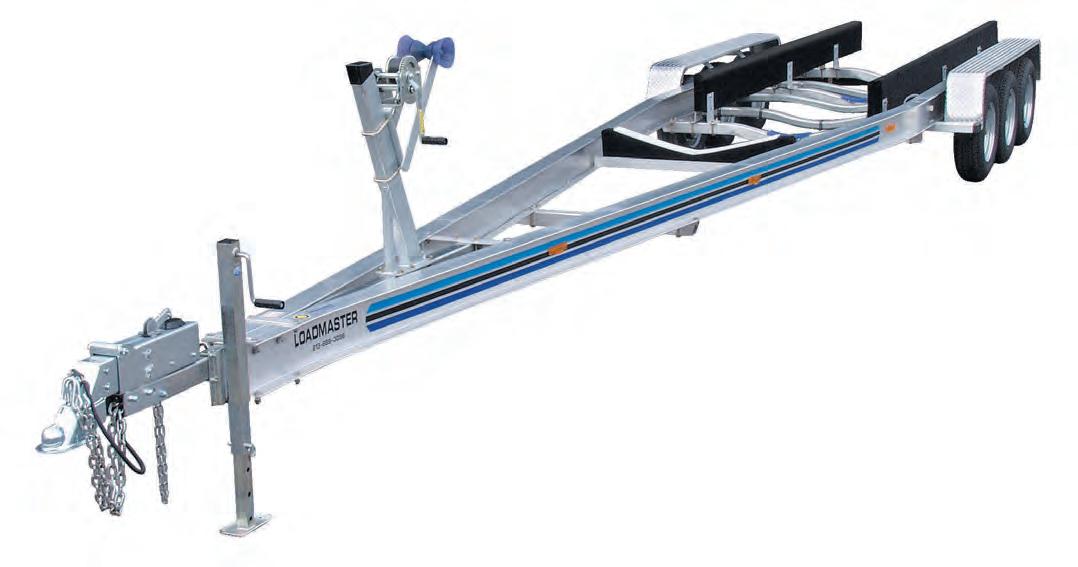



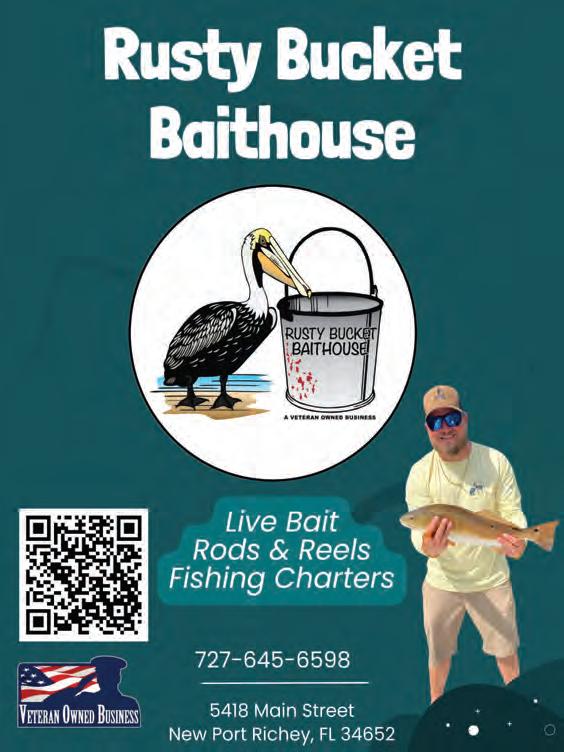
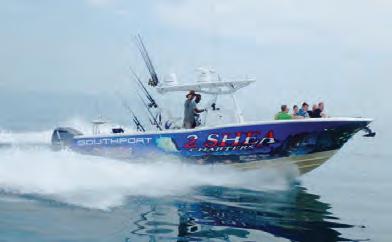

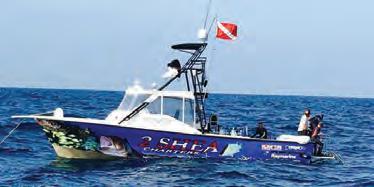
Poke is an amazing, delicious and easy way to prepare your fresh caught fish! Here is our recipe. Ingredients can be found in your pantry and from your local grocery store. Serves 3-5 people.
Ingredients:
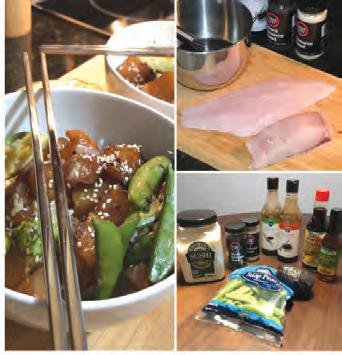
• 2 cups sushi rice (follow your brands instructions)
• 2 tablespoons of each black and white sesame seeds
• 6 ounces light soy sauce
• 4 ounces teriyaki sauce
Instructions:
• 6 ounces ponzu sauce
• 3 ounces sesame oil
• 1-pound snap peas or edamame
• Approximately 1.5 pounds of freshly speared fish
Combine all sauces into a medium mixing bowl and whisk together. Cut your filets into bite sized pieces and add to the mixing bowl. Put it in the refrigerator for approximately 30 to 40 minutes. Cook the sushi rice according to its instruc tions. Let cool for about 15 to 20 minutes. Portion the rice into bowls. Remove the fish from the poke marinade and portion over the rice. Sprinkle with sesame seeds. Add a few of the snap peas or edamame and enjoy! Pairs well with sake or a light beer.

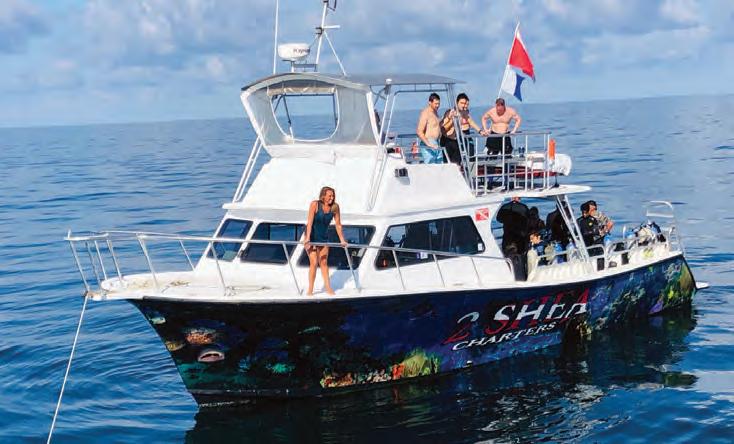
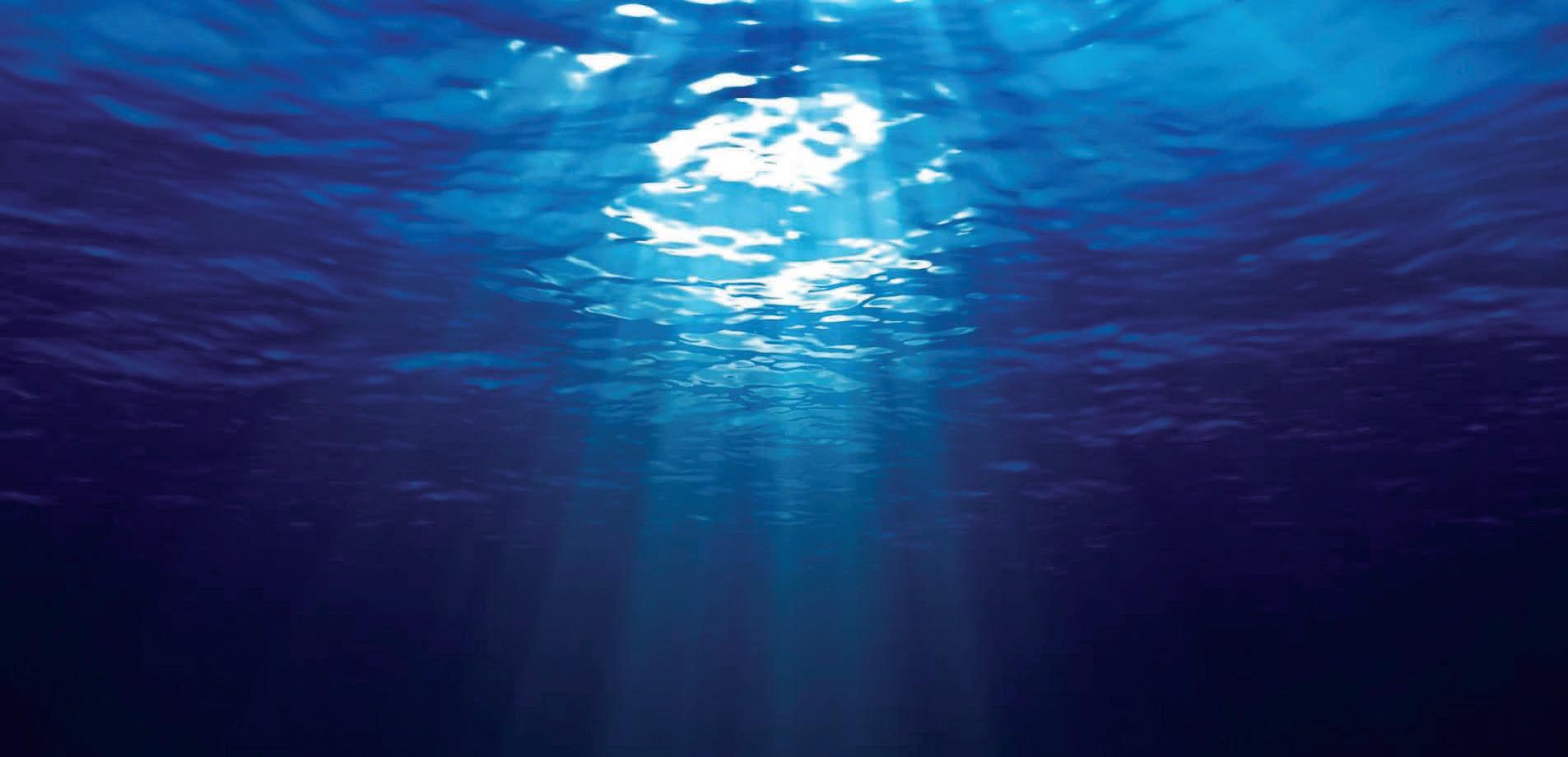
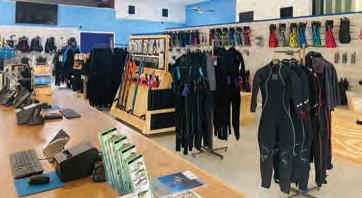





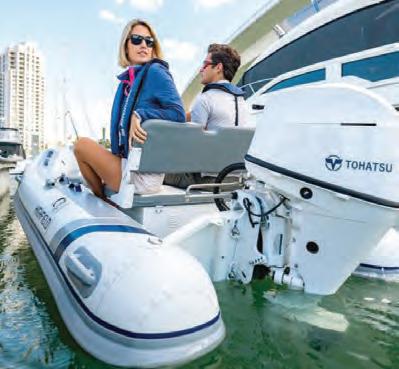
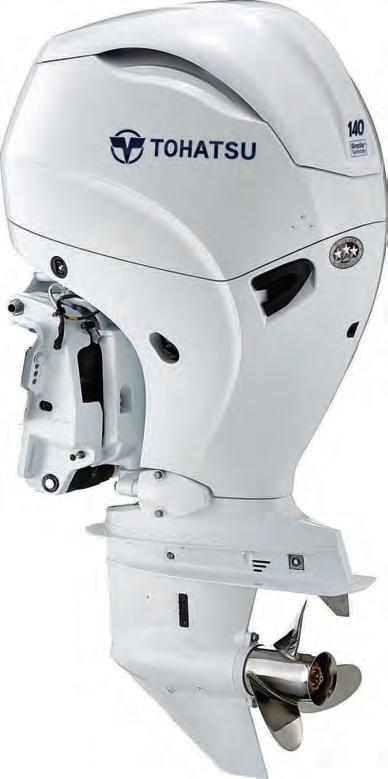
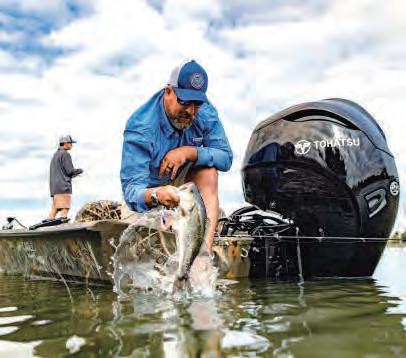


2
5
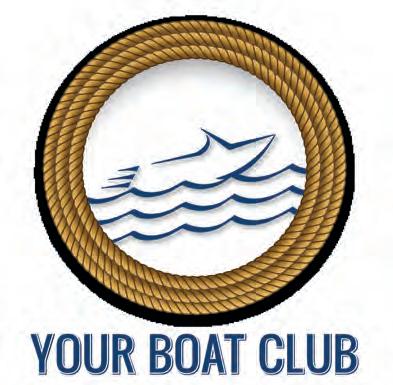





































8
3
2





















19
22
25












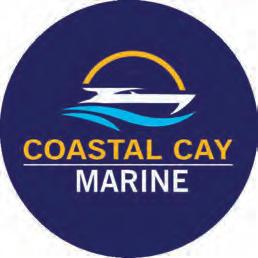

































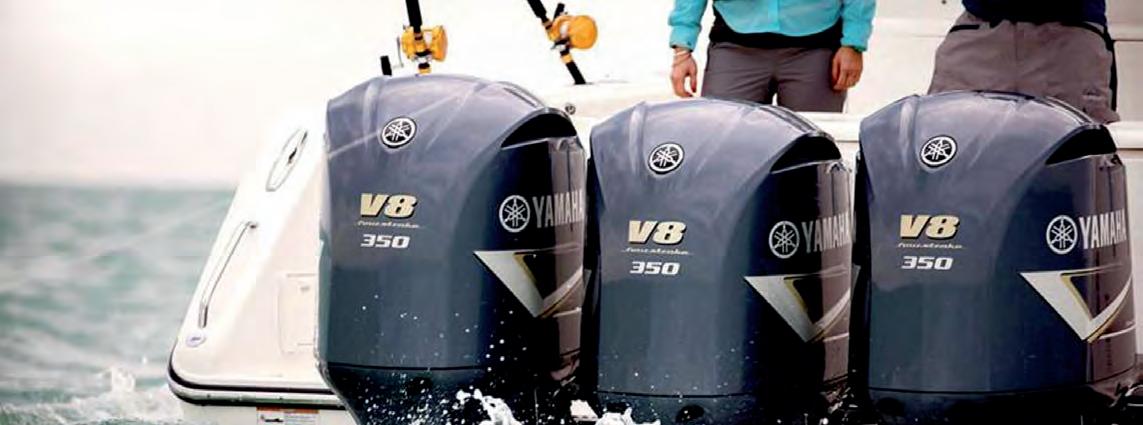
















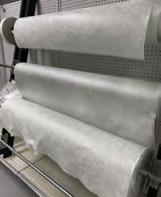
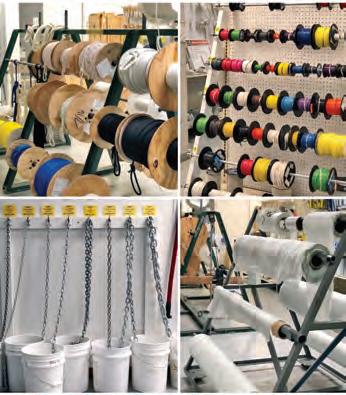
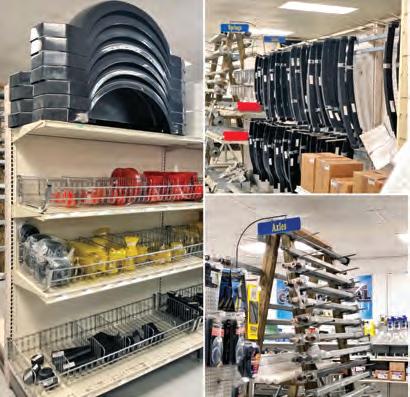




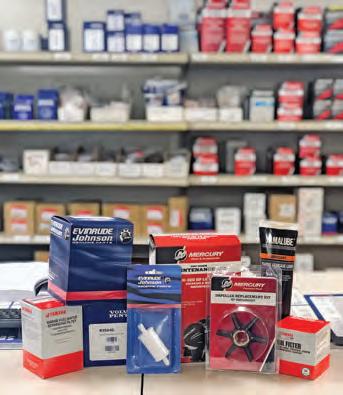
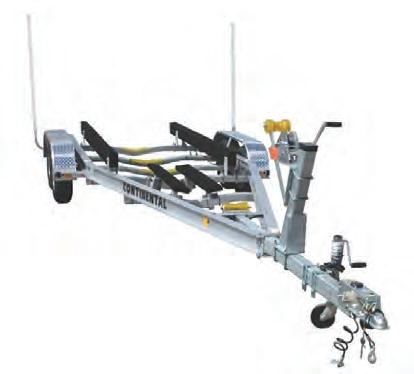







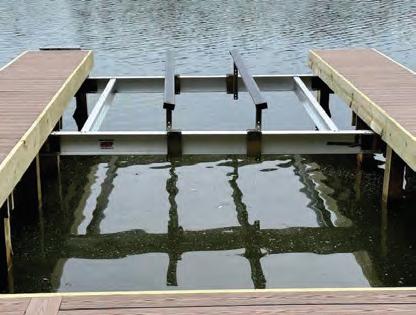

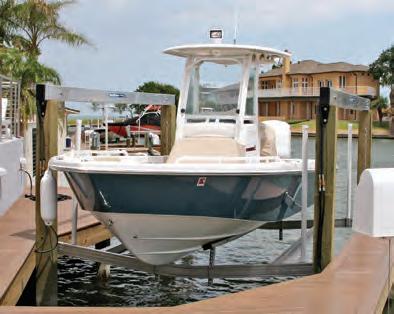


ShoreStation hydraulic boat lifts are a reliable choice for coastal residents and boating enthusiasts alike. Their strong construction, made with corrosion-resistant materials, allows them to withstand harsh environmental conditions, including sun, storms, and saltwater damage. ShoreStation provides a steadfast solution for protecting waterfront investments, ofering peace of mind to owners in the Sunshine State.
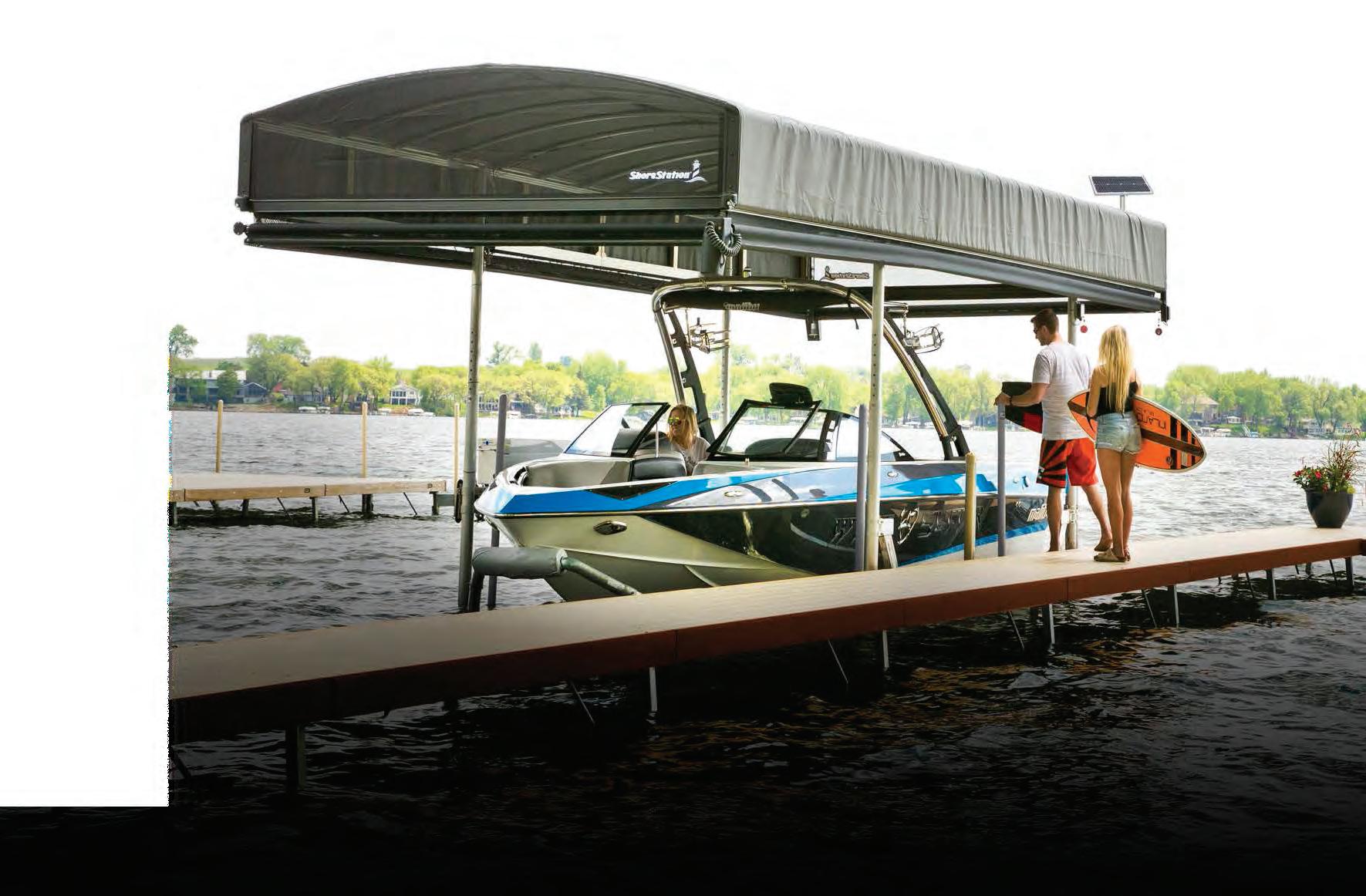

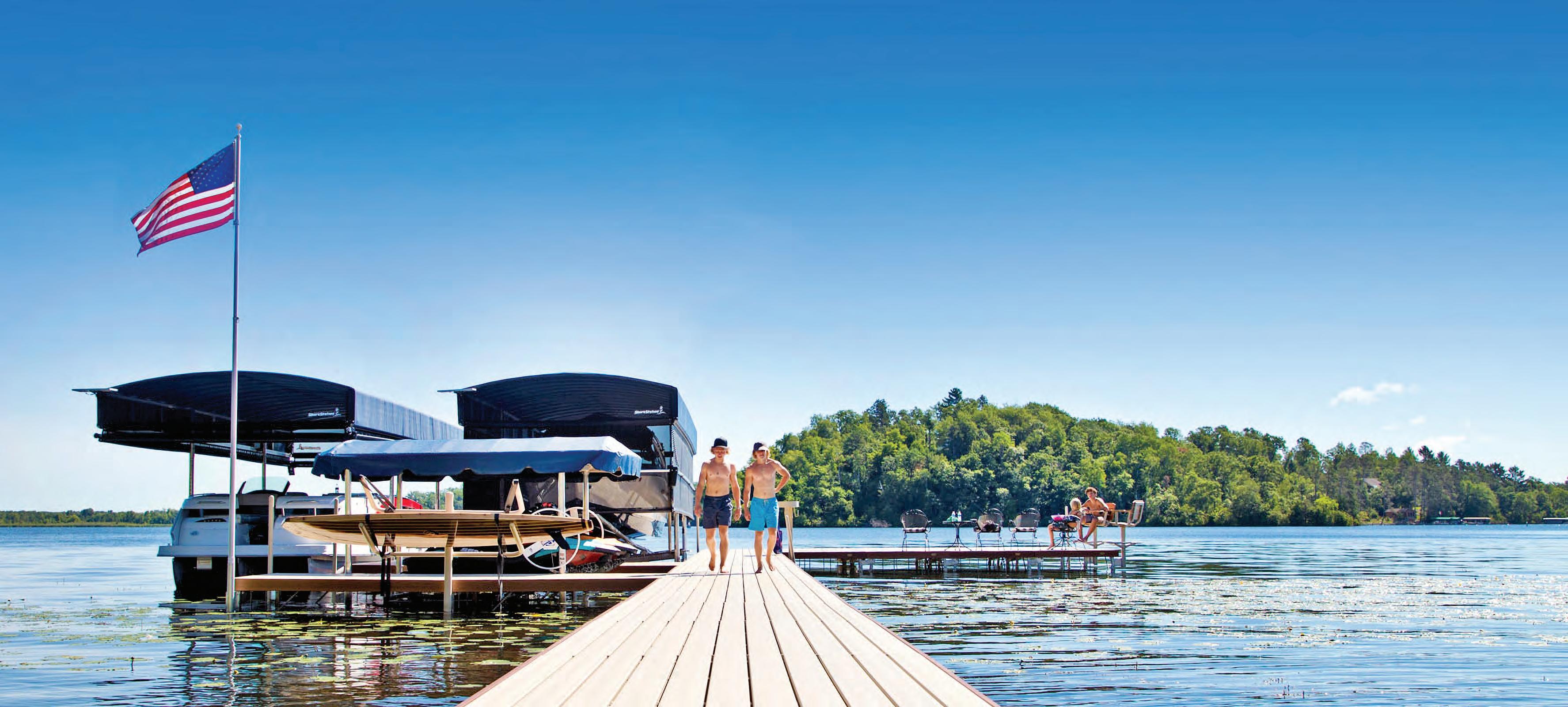





Equipped with exceptional weather resistant fabric and breathable SunTex 80 woven mesh ends for maximum protection and durability,

Made from the highest quality materials, our innovative hydraulic boat lift is one of the fastest and safest lifts on the market today. When you have a hydraulic lift, there’s no need to worry about wind and waves getting in your way. This lift will give you confdence to safely land and secure your boat in less-than-ideal conditions.
Never miss another moment on the water. Power your lift with clean, free solar power. Our speedy 20 watt charger features solar regulator drainage protection, saving your battery from permanent damage caused by overcharging.



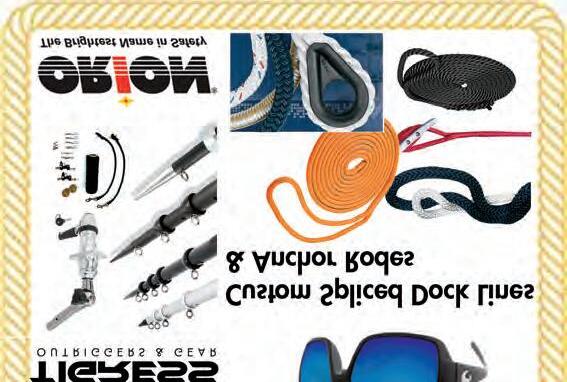
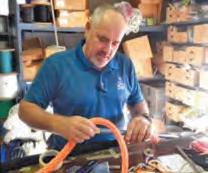


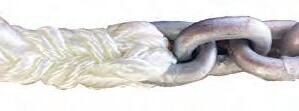

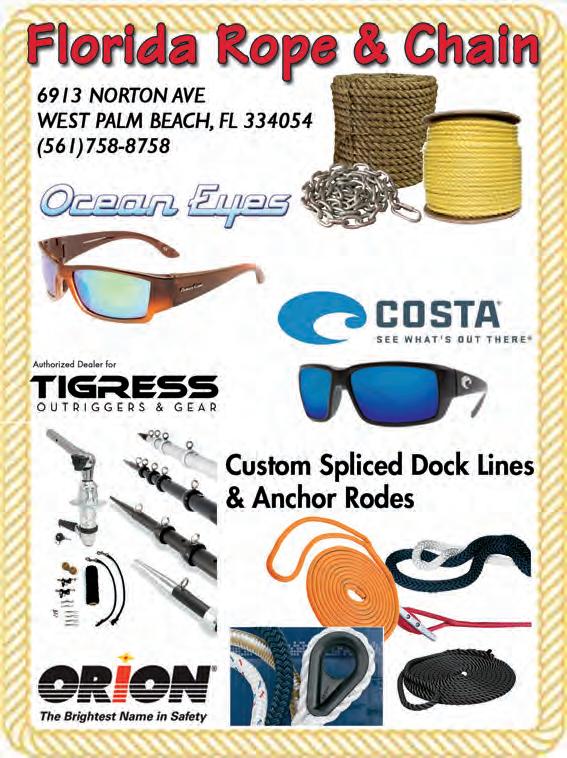
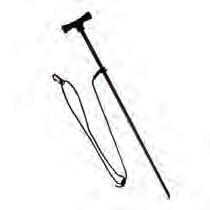









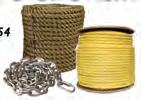
By Dr. Sal Benezo
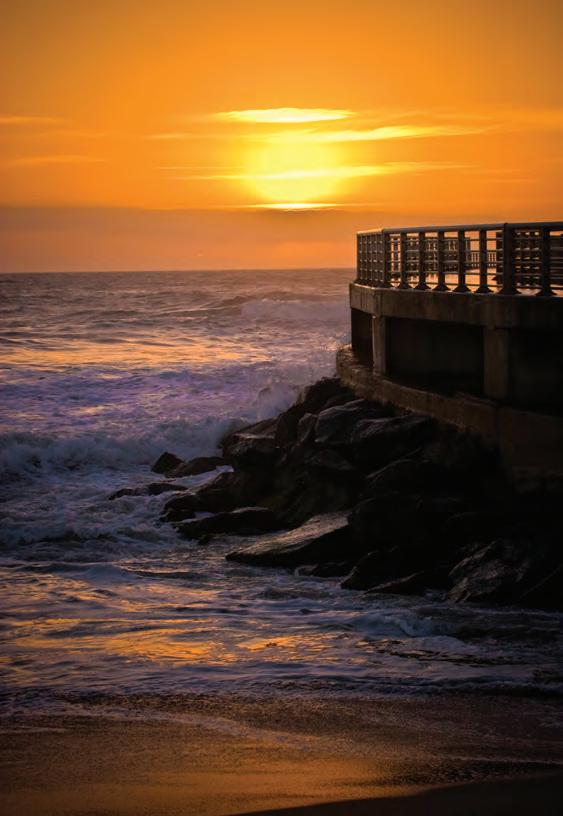

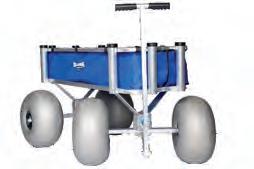



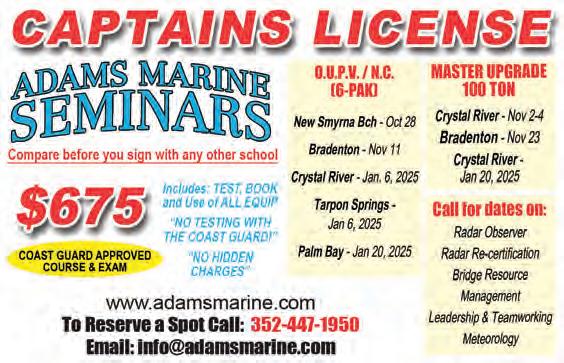
During a hurricane, fsh experience dramatic changes in their environment that can afect their behavior, habitat, and survival. As the atmospheric pressure drops with an approaching hurricane, the water pressure at diferent depths also changes. Fish have swim bladders that help regulate buoyancy, and the rapid changes in pressure can afect how they swim and maintain their depth. Some fsh may dive deeper to avoid the surface turmoil.
Hurricanes churn up sediment from the seabed, making the water murkier. Tis can reduce visibility, afecting how fsh fnd food and avoid predators. In coastal areas, this turbidity can also carry pollutants and toxins from land runof, negatively impacting the water quality.
Hurricanes generate powerful underwater currents and massive waves. Many fsh seek refuge in deeper waters, coral reefs, or underwater structures to avoid being swept away. Shallow-water fsh may struggle more to fnd shelter from the turbulence, which could lead to displacement or death.
Hurricanes ofen bring a rapid infux of fresh water from rain and runof, lowering the salinity of coastal waters. Some species, especially those adapted to certain salinity levels, may be stressed or forced to move to more stable areas. Additionally, the mixing of ocean layers can lead to changes in water temperature, which can afect fsh metabolism and spawning behaviors.
Te disturbance of the water column can disrupt oxygen levels, particularly in areas where organic matter from land washes into the ocean. Decomposing plant material can deplete oxygen in the water, creating hypoxic (low oxygen) zones, which can force fsh to fee or risk sufocation.
Fish, especially schooling species, may instinctively move to safer waters before or during a hurricane. Some species seem to sense the change in barometric pressure and migrate to deeper or more sheltered areas ahead of the storm. However, fsh that get caught in the turbulent water may end up displaced far from their usual habitat.
Afer a hurricane, habitats may be altered signifcantly. Coral reefs, seagrass beds, and mangroves—essential fsh habitats—can be damaged, leading to long-term impacts on fsh populations. However, hurricanes can also bring benefts, such as replenishing nutrients and oxygen in certain water bodies, which can stimulate plankton growth and temporarily improve food availability for fsh.
Fish have evolved to withstand many natural disturbances, including hurricanes, but the intensity and frequency of storms can have lasting efects on fsh populations, particularly for those in fragile ecosystems.



TRACY PATTERSON
Costa Rica is a renowned destination for anglers, ofering calm seas, ideal fshing conditions, and worldclass fshing. It is especially popular among female anglers due to its safety, tournaments, and supportive crews, making it an unforgettable experience.
If you’re seeking high odds of catching billfsh, Costa Rica is the place to be. On a full day ofshore, it’s common to get multiple strikes. Te fat, calm seas make it enjoyable for anglers of all levels, letting you focus on reeling in catches rather than battling rough waters.
Costa Rica hosts two ultra prestigious women-only tournaments: the Ladies Angler Tournament at Los Suenos Resort and Marina, and the Pescadora Billfsh Championship at Marina Pez Vela. Both tournaments create a supportive

yet competitive environment for anglers of all skill levels. Te Pescadora Championship is
particularly unique, ofering two Female Angler of the Year awards based on diferent fshing techniques. It encourages women to challenge themselves and grow in the sport.
Costa Rica is ranked #1 in Central America for safety, and recent laws further protect women from harassment. Female anglers can feel comfortable walking around resorts and marinas. Charter feets also adhere to strict safety regulations, ensuring peace of mind while on the water.

Whether you’re staying at a boutique hotel or a private home, Costa Rica ofers a range of accommodations for groups of all sizes. Many resorts are conveniently located near marinas, allowing easy access to fshing trips and other adventures.
Costa Rica is home to many women who support the lady angler movement. Te captains and crews are eager to teach beginners, helping them hook their frst billfsh or refne their skills. With women accounting for a growing percentage of anglers, Costa Rica ofers a welcoming and empowering environment for female anglers.
Whether you’re an experienced angler or a frst-timer, Costa Rica ofers an unbeatable fshing experience. Its exceptional conditions, tournaments, safety, and camaraderie make it the top destination for lady anglers.
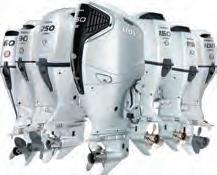





IBy Capt. Michael Okruhlik
t’s that thrilling time of the year, founder time! Te fall migration, reaching its peak in November along the Gulf Coast, promises an exciting infux of founder to their spawning grounds. Louisiana, following Texas, has also implemented a closed season during this peak run. But remember, the inability to keep fatties during this time doesn’t dampen the thrill of catching them.
Flounder will be migrating into the Gulf during this time, so the apparent ambush areas will be around passes that lead to the Gulf. Te founder will position themselves in diferent regions based on the tide level and current strength. In addition to using their burying-in-the-sand ambush technique, they also utilize structure in several ways.
First, any object that protrudes above the bottom is a great ambush point. Tis ofers a current break for forage fsh to gather directly above a buried founder, making for an easy meal. Objects such as bulkheads are also great ambush points. Flounder like to position themselves against the solid barrier and I think this can be for two separate reasons depending on what other factors are at play. As mentioned above, it could be a current break, especially if the bulkhead has a corrugated shape. When a founder settles against a bulkhead, its prey has less direction in which it can fee, allowing the founder greater odds of capturing it. When targeting founder, never pass up a bulkhead.
Secondly, founder can be caught using a variety of lures and live bait, especially if you keep it in contact with the bottom to increase your chances of a strike. When it comes to live bait, a frisky mullet is your best bet for landing a larger founder. If you’re aiming for a trophy, this is the way to go. Personally, I prefer fshing with lures, particularly the paddle tail style. Jerk-style sof plastics and bucktails can also be efective when worked in the same manner.
If I had to pick a tide to maximize my time on the water, I would choose a medium fow outgoing. Although there are no set rules that fsh always follow, I feel the founder feed more on their way out to the gulf, utilizing
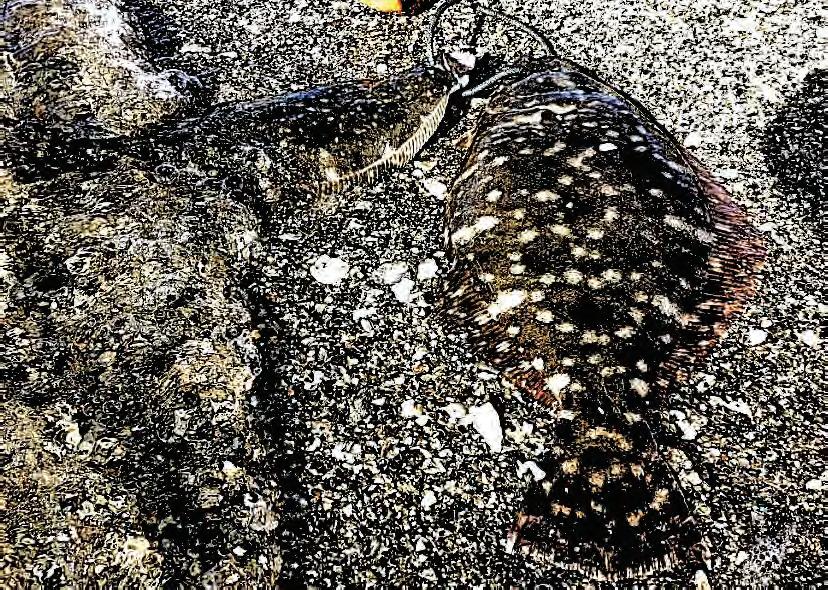
the current to ease their journey. Contrary to the incoming tide, they bury themselves rather than fght against the current.
Don’t let the closed season discourage you from targeting founder during this migration; it will have its advantages. Going forward we will undoubtedly have a larger founder population, but the instant gratifcation will be a lot less trafc in our favorite founder spot! I will use the closed season to target a new personal best this season, as should you.
Capt. Michael Okruhlik is the inventor of Knockin Tail Lures® and the owner of www.MyCoastOutdoors.com.



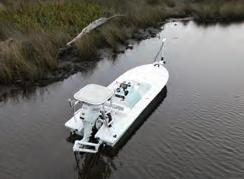

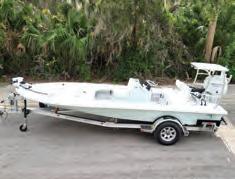
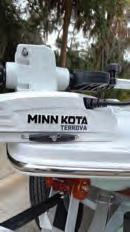




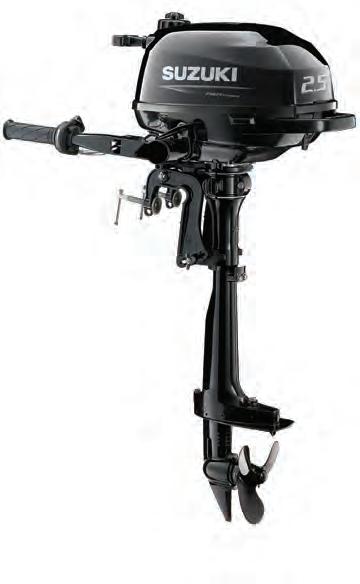


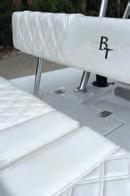



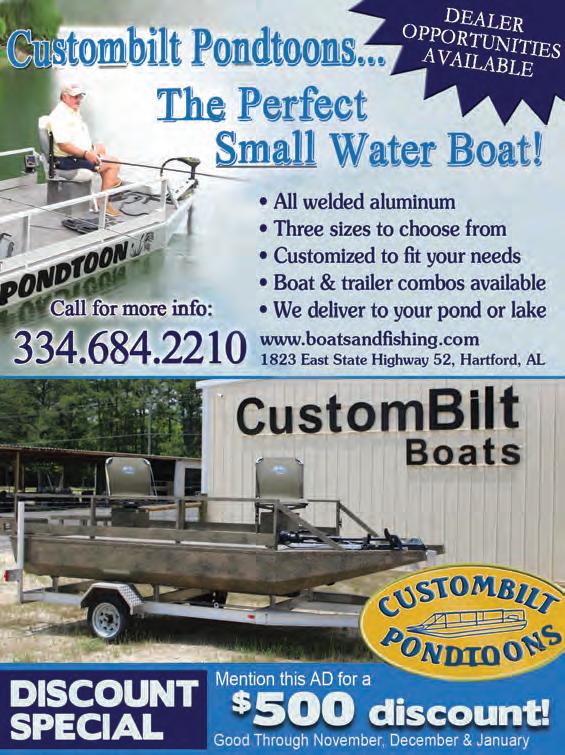
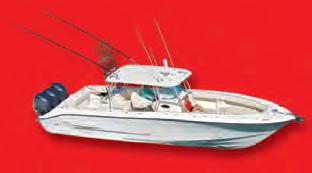
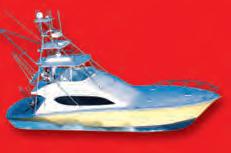


OTim Barefoot

f course, October is when it all starts, but if you like to bottom fsh, then November is the month the turbo kicks in, leading to the crescendo of the year… December. I’ve always said the week of Christmas is the apex of the grouper fshing calendar, and I’ll stand by that statement now. Tis is when larger (male) gags move inshore to establish their territory on inshore ledges, wrecks, and live bottom, much like buck deer making scrapes and rubs to mark their territory. Tese males now wait for the smaller females to show up in numbers to spawn, and the bite traditionally goes of the charts.
A small piece of hard bottom can attract large numbers of fsh if it contains the right ingredients. First and foremost, you need to locate their food. Go to the places that have traditionally held the bait—cigar minnows, sardines, beeliners, etc. “Find the bait, fnd the fsh” has been my thought process for years. Tese fsh won’t show up to a party without food—common sense. You can anchor up on a stack of bait without seeing a big mark of fsh, but afer a few bites, you’ll notice the screen light up with more and more fsh showing up.
Anchoring up is key to shallow water grouper fshing. Te sound of fsh feeding travels great distances and doesn’t go unnoticed. Once an area is fred up, constant bites supercharge the atmosphere down there. If you’re drifing, you won’t get a specifc area fred up; you’ll only go back where you got bites. But if you anchor, the fsh come to you to join in. Tis draws the alpha predators—big sharks. Yes, you’ll lose some fsh and tackle to these bruisers, but enjoy the ride while it lasts. When sharks show up, it’s time to move on to another ledge or further down the same one.

Back to noise... Keep in mind that while we hear very little, fsh hear everything. Sound travels far underwater, and everything you do on deck—slamming cooler lids, dropping hard objects, loud music, yelling—is heard by the fsh. It could be the diference between catching smaller cows or big bulls. Large male groupers didn’t get old by being dumb. You don’t kill big bucks by being noisy, so treat your fshing with the same respect.
Te folks that target grouper come home with grouper. Te ones who go “bottom fshing” with cut bait and chicken rigs come home with “bottom fsh.” As Franklin Covey said, “begin with the end in mind.” If you’re targeting grouper, think and act like it. Put baits on the bottom that avoid trash bites. Spend time jigging up some of that “trash” and drop them back down on a Decoy Jig for optimal results. Watch some of my videos on YouTube (Tim Barefoot) for examples of what I’m saying.
For more information, visit barefootcatsandtackle.com.
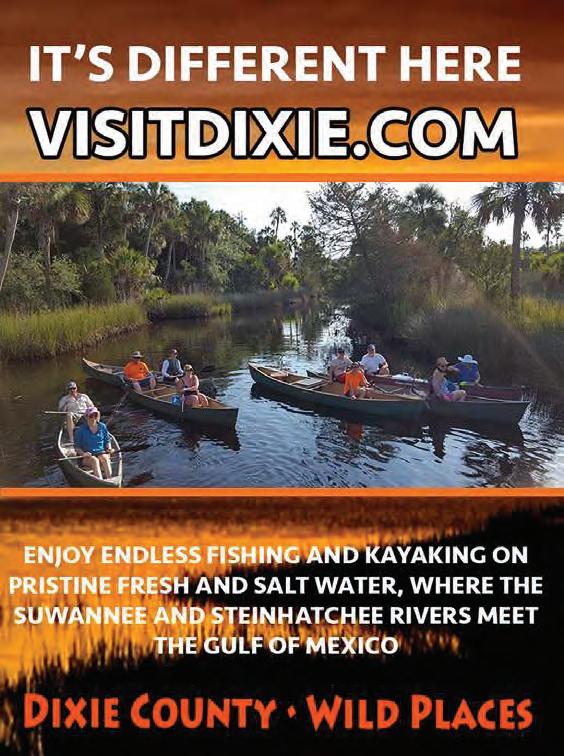







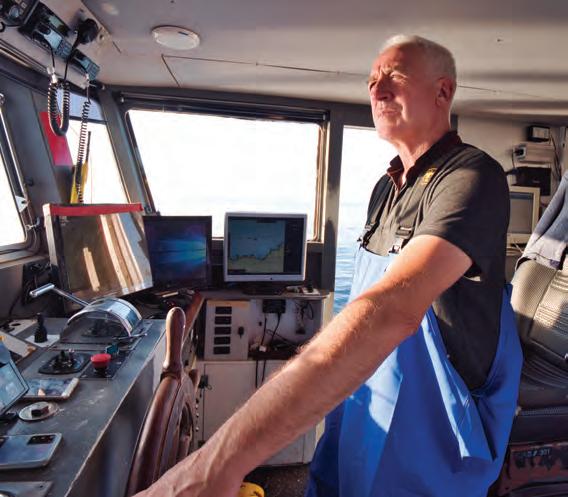












You want AI Routing! Let TZ MAPS with AI Routing make route planning a snap. Don’t take our word for it. Scan here to see for yourself how easy it is!